Samsung Galaxy S24 vs Google Pixel 8: the key differences
Samsung's smallest S24 against Google's latest Pixel
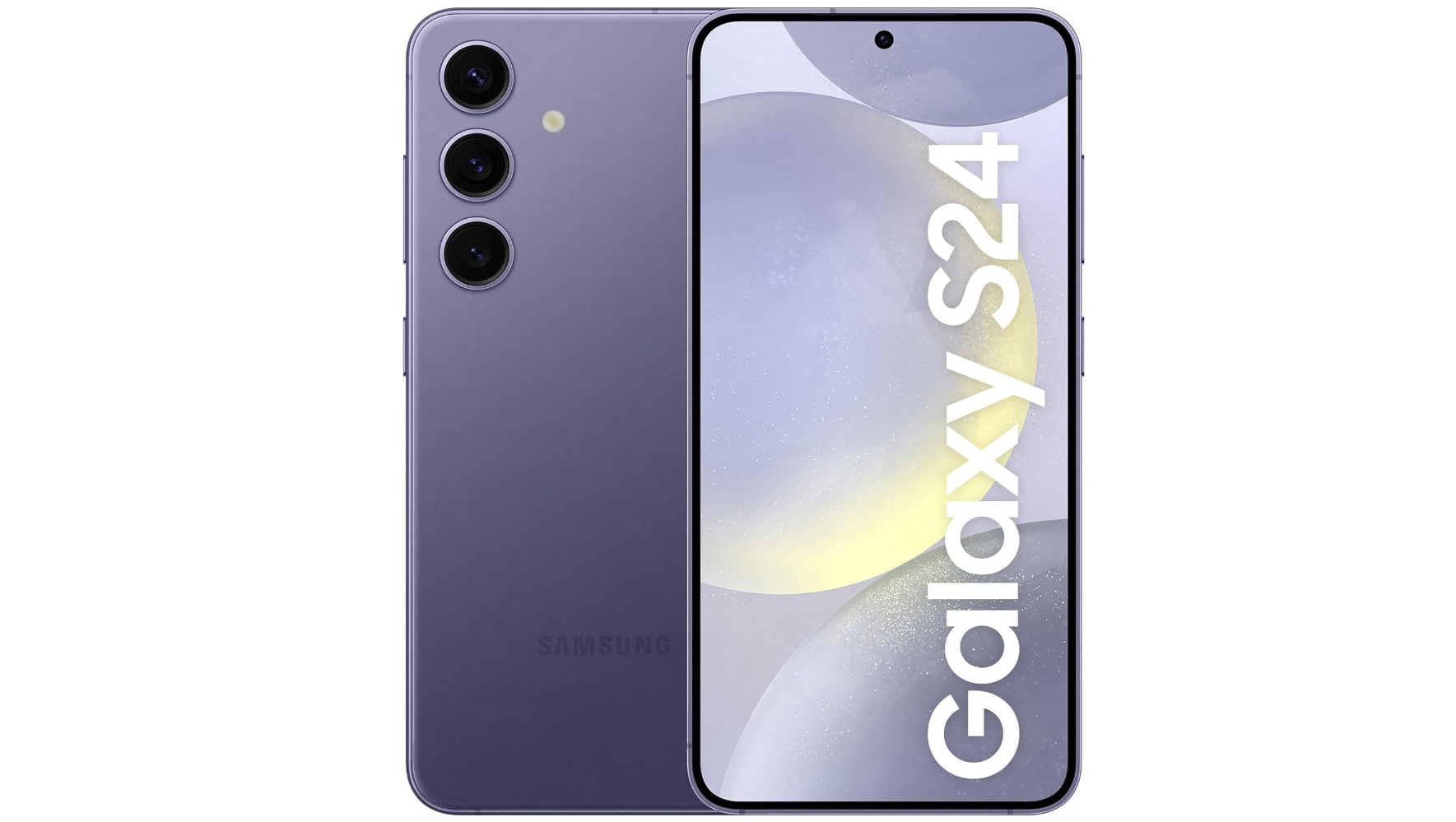
Weight: 167g
Dimensions: 147 x 70.6 x 7.6mm
Screen size: 6.2-inch
Resolution: 1080 x 2340
Chipset: Snapdragon 8 Gen 3 / Exynos 2400
RAM: 8GB
Storage: 128GB/256GB/512GB
Battery: 4,000mAh
Rear camera: 50MP+12MP+10MP
Front camera: 12MP
The Samsung Galaxy S24 is a close competitor to the Pixel 8 thanks to its AI tricks. It's also extremely powerful, but it's expensive too, and has complicated software.
Pros
- Sharp and bright display
- Versatile cameras
- Ultra powerful
Cons
- AI is a mix of cool and useless
- No massive upgrades
- Complicated software
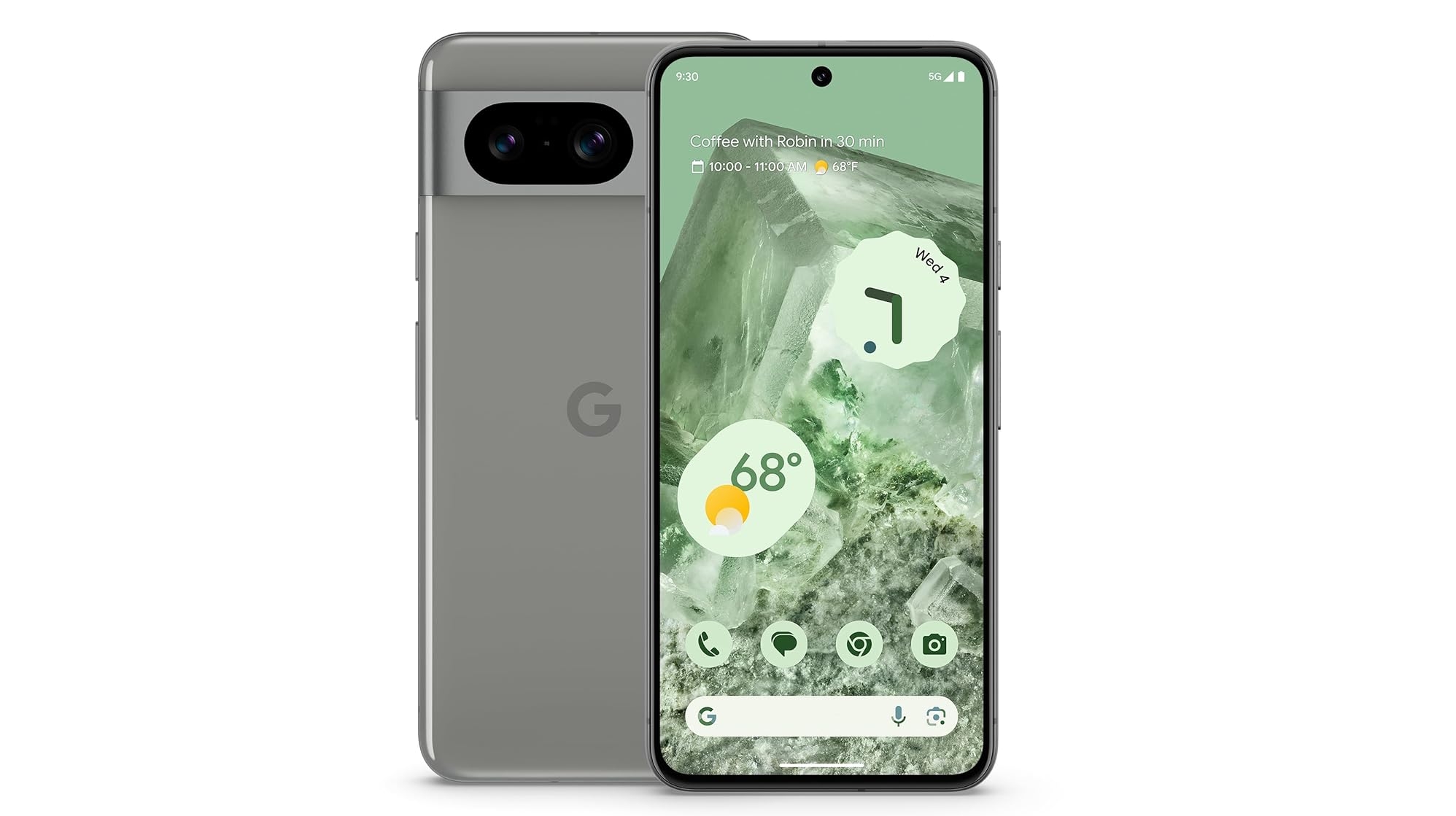
Weight: 187g
Dimensions: 150.5 x 70.8 x 8.9mm
Screen size: 6.2-inch
Resolution: 1080 x 2400
Chipset: Google Tensor G3
RAM: 8GB
Storage: 128GB/256GB
Battery: 4,575mAh
Rear camera: 50MP+12MP
Front camera: 10.5MP
The Google Pixel 8 has fewer cameras than the Galaxy S24 and is less powerful, but it's also less expensive, and has a more eye-catching design. Fans of slick software should also look to Google's phone over Samsung's.
Pros
- Cheaper than the S24
- Great design
- AI camera tricks
Cons
- Design changes are minor
- Minimal camera upgrades
- Fewer cameras than the S24
The Samsung Galaxy S24 is Samsung's main flagship for 2024, offering a cheaper but still high-end alternative to the Samsung Galaxy S24 Plus and Samsung Galaxy S24 Ultra.
But there's more than just Samsung phones to consider, as the Google Pixel 8 is a key rival to this handset. So how do these phones compare? You'll find an answer to that below, based both on their specs and our hands-on impressions from our full Pixel 8 review and our full Samsung Galaxy S24 review.
Oh, and if you are considering one of Samsung's other new flagships, check out our hands-on Samsung Galaxy S24 Plus review and our full Samsung Galaxy S24 Ultra review.
Samsung Galaxy S24 vs Google Pixel 8: specs comparison
Below you'll find a chart containing the specs the standard Samsung Galaxy S24 has served up, compared to those of the Google Pixel 8.
| Samsung Galaxy S24 | Google Pixel 8 | |
|---|---|---|
| Dimensions: | 147 x 70.6 x 7.6mm | 150.5 x 70.8 x 8.9mm |
| Weight: | 167g | 187g |
| Display: | 6.2-inch 'Dynamic AMOLED 2X' | 6.2-inch 'Actua' OLED |
| Resolution: | Full HD+ (1080 x 2340) | Full HD+ (1080 x 2400) |
| Refresh rate: | 1Hz-120Hz (dynamic) | 60Hz to 120Hz (fixed) |
| Chipset: | Qualcomm Snapdragon 8 Gen 3 / Exynos 2400 | Google Tensor G3 |
| Rear cameras: | 50MP main (24mm, ƒ/1.8), 12MP ultra-wide (13mm, ƒ/2.2), 10MP telephoto (67mm, ƒ/2.4) | 50MP main (ƒ/1.68, 82° FoV w/ OIS), 12MP (ƒ/2.2, 125.8º FoV) |
| Front camera: | 12MP (f/2.2) | 10.5MP (ƒ/2.2, 95º FoV) |
| RAM: | 8GB | 8GB (LPDDR5X) |
| Storage: | 128GB / 256GB / 512GB | 128GB / 256GB (UFS 3.1) |
| Battery: | 4,000mAh | 4,575mAh |
| Charging: | 25W wired, 15W wireless, 4.5W reverse wireless | 27W wired, 18W wireless (2nd-gen Pixel Stand), 12W wireless (Qi) |
| Colors: | Onyx Black, Marble Gray, Cobalt Violet, Amber Yellow, Sandstone Orange, Sapphire Blue, Jade Green | Obsidian, Hazel, Rose |
Samsung Galaxy S24 vs Google Pixel 8: price and availability
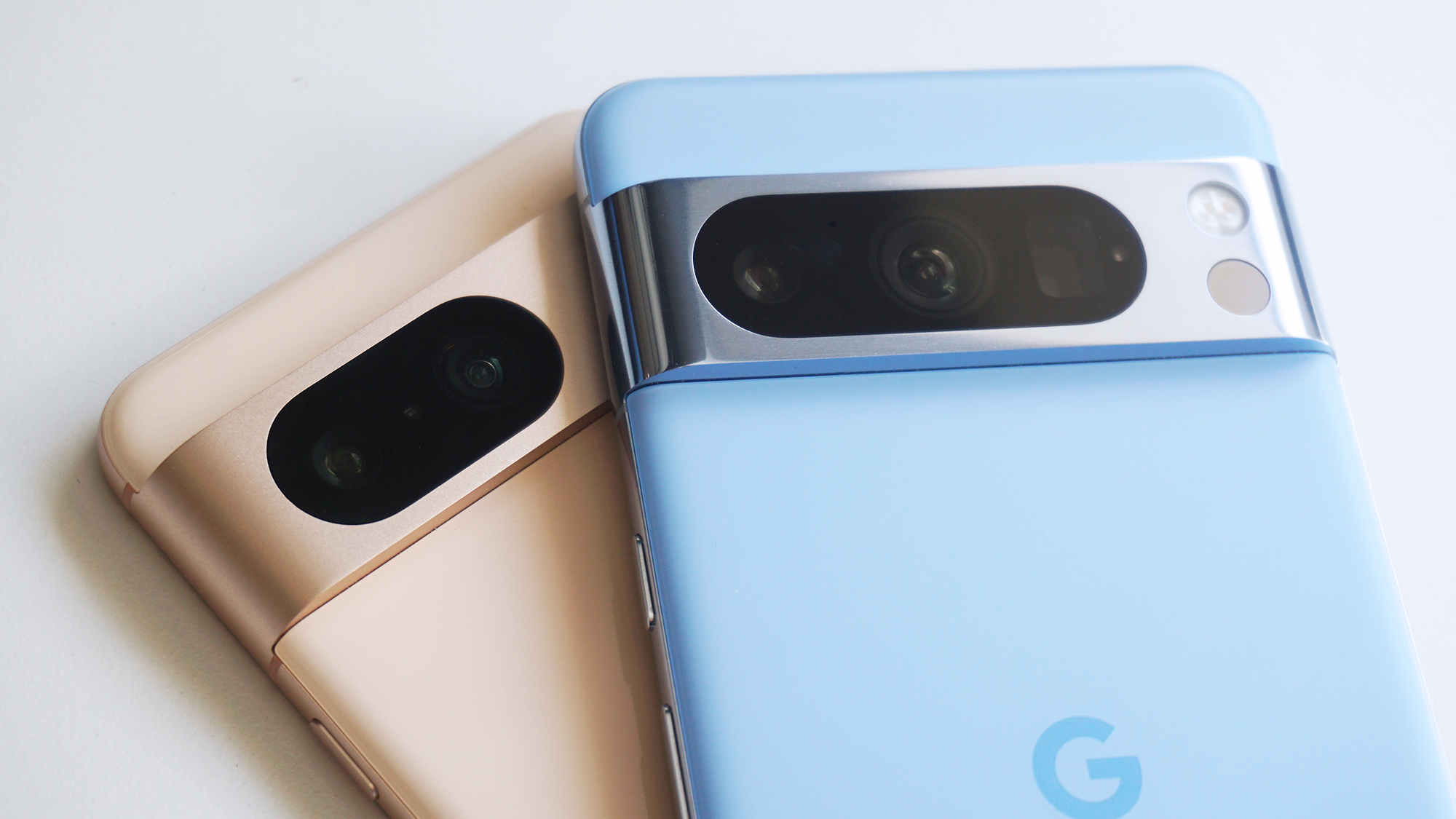
The Pixel 8 arrived alongside the Pixel 8 Pro and Google Pixel Watch 2 at the company's 'Made by Google' event on October 4, 2023, and went on sale just over a week later, on October 12.
Clocking in at $699 / £699 / AU$1,199 for the 128GB model, it starts at a higher asking price than its predecessor, with a more expensive 256GB options on offer as well, for $759 / £759 / AU$1,299.
| Samsung Galaxy S24 | Google Pixel 8 | |
|---|---|---|
| 128GB: | $799.99 / £799 | $699 / £699 / AU$1,199 |
| 256GB: | $859.99 / £859 / AU$1,399 | $759 / £759 / AU$1,299 |
| 512GB: | AU$1,599 | N/A |
As for the S24, that was announced alongside its siblings on January 17, 2024, and it shipped on January 31, so you can grab one of the best Samsung Galaxy S24 deals now.
Sign up for breaking news, reviews, opinion, top tech deals, and more.
As far as the Samsung Galaxy S24 price is concerned, it starts at $799.99 / £799 for a 128GB model. However oddly there's no 128GB version in Australia. Instead, you can get 256GB or more there, with 256GB costing $859.99 / £859 / AU$1,399, and there's also a 512GB model in Australia which costs AU$1,599, but isn't available in the US or UK.
So pricing for the Samsung Galaxy S24 is a bit confusing, but the 128GB model costs $100 / £100 more than the 128GB Pixel 8, and the 256GB version costs $100 / £100 / AU$100 more than the 256GB Pixel 8.
Samsung Galaxy S24 vs Google Pixel 8: design and display
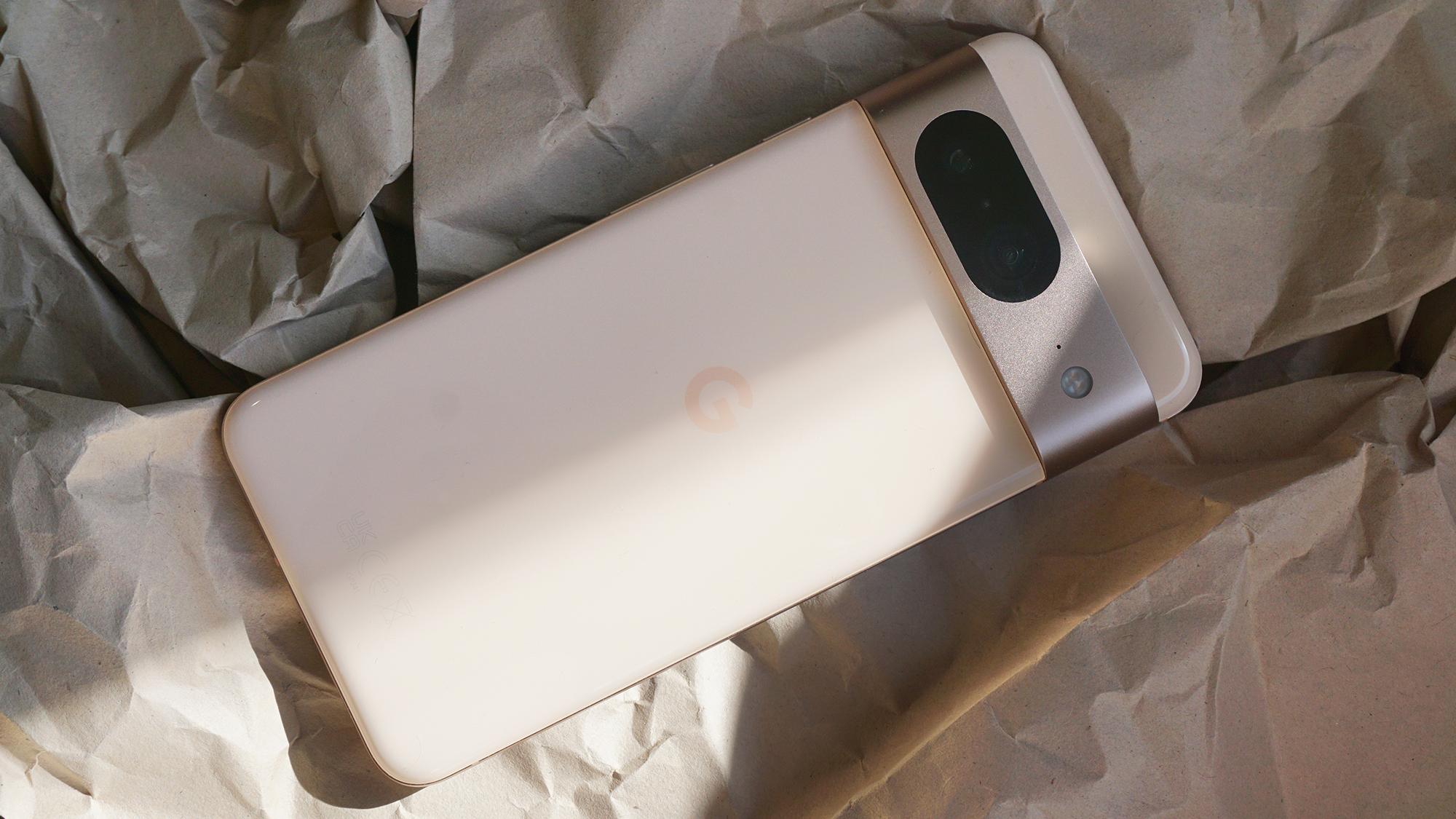
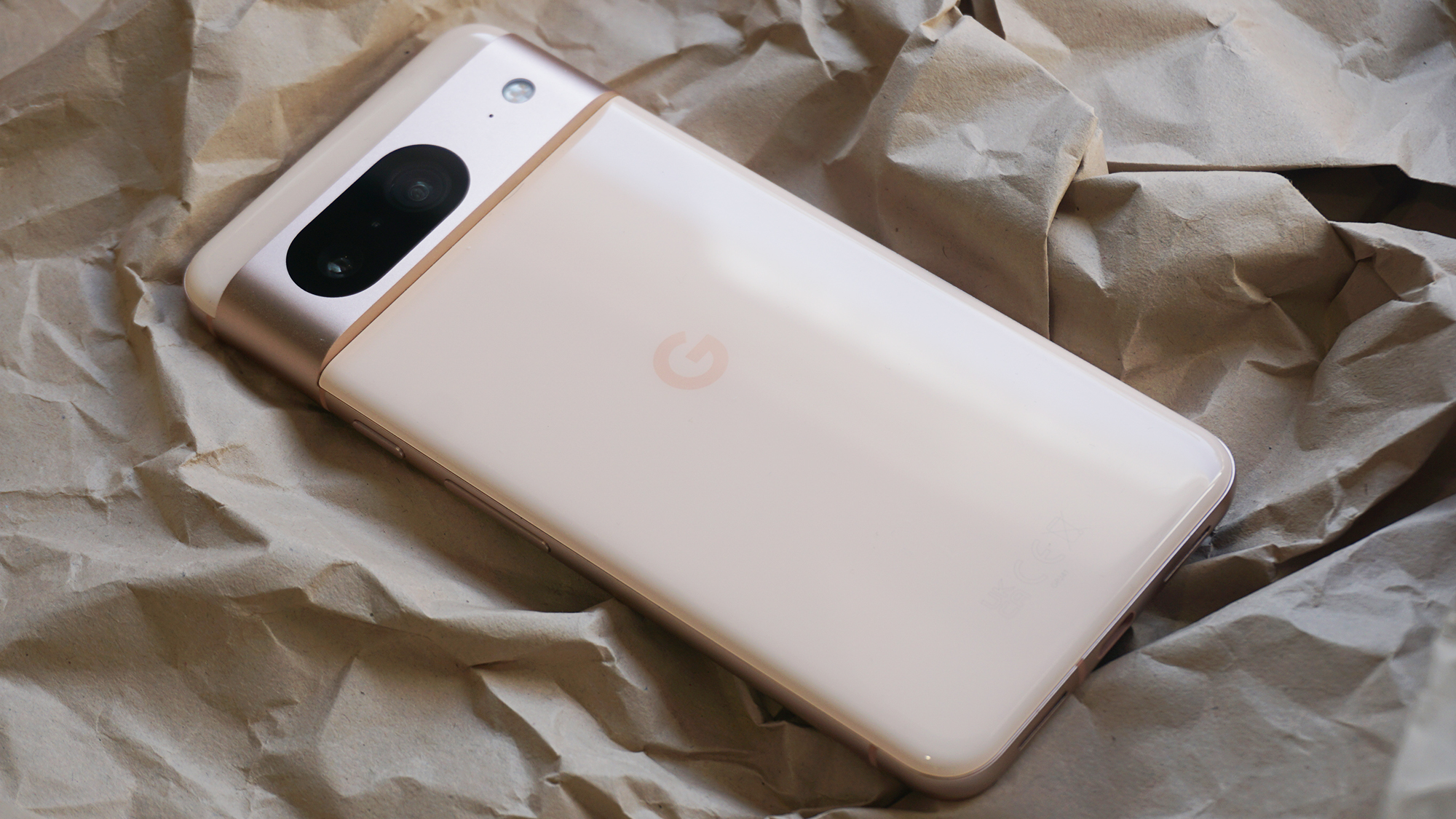
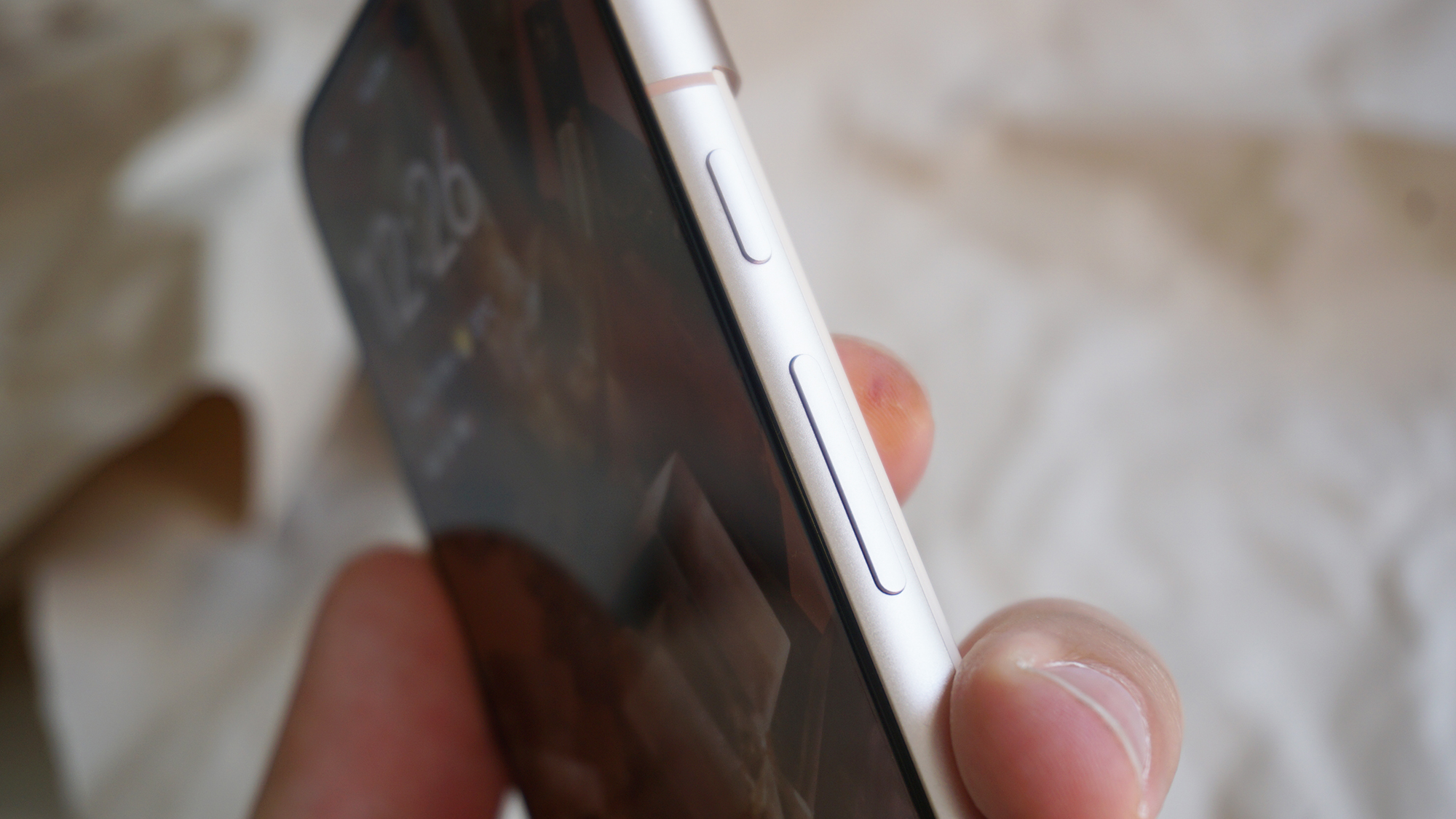
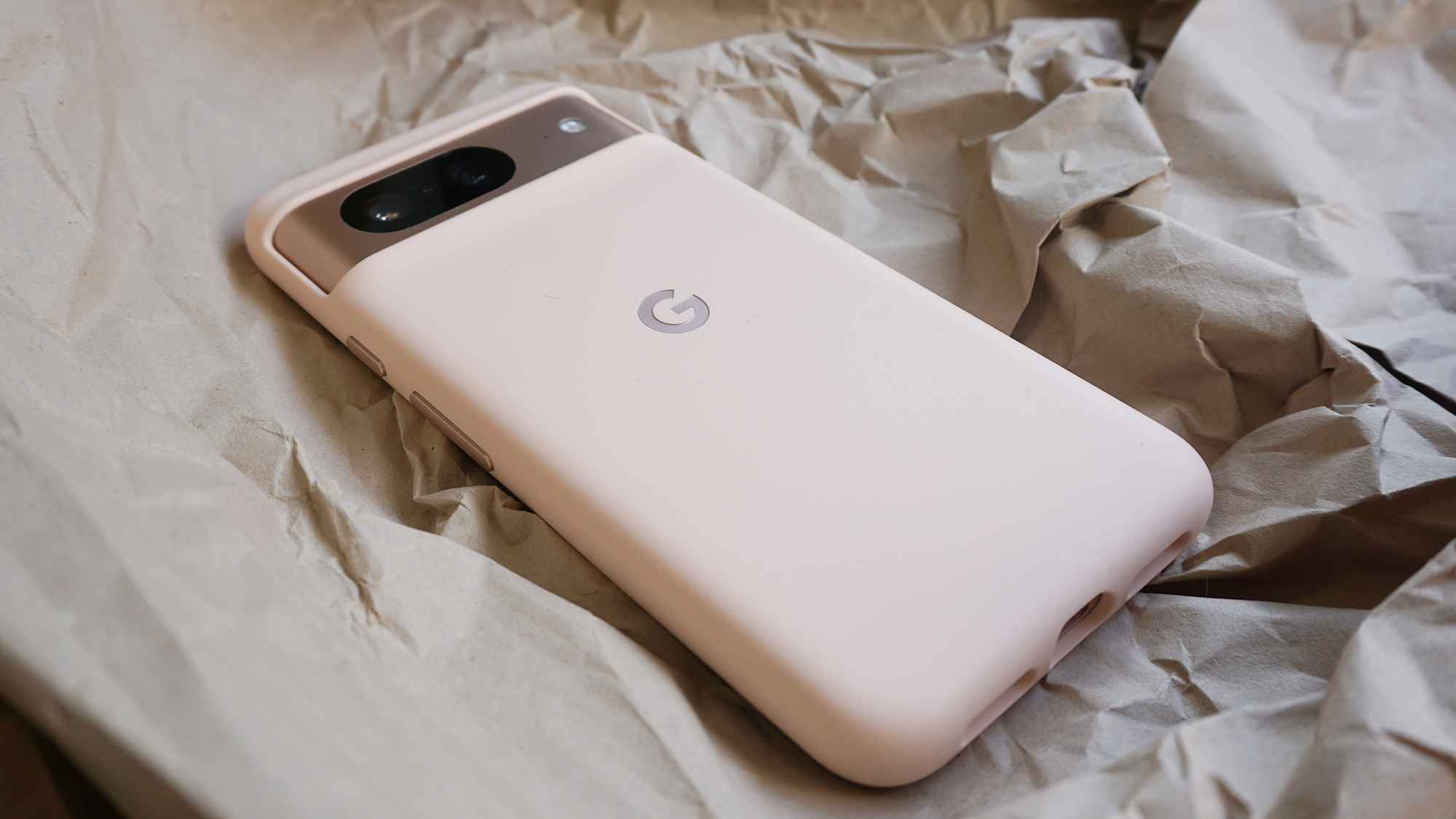
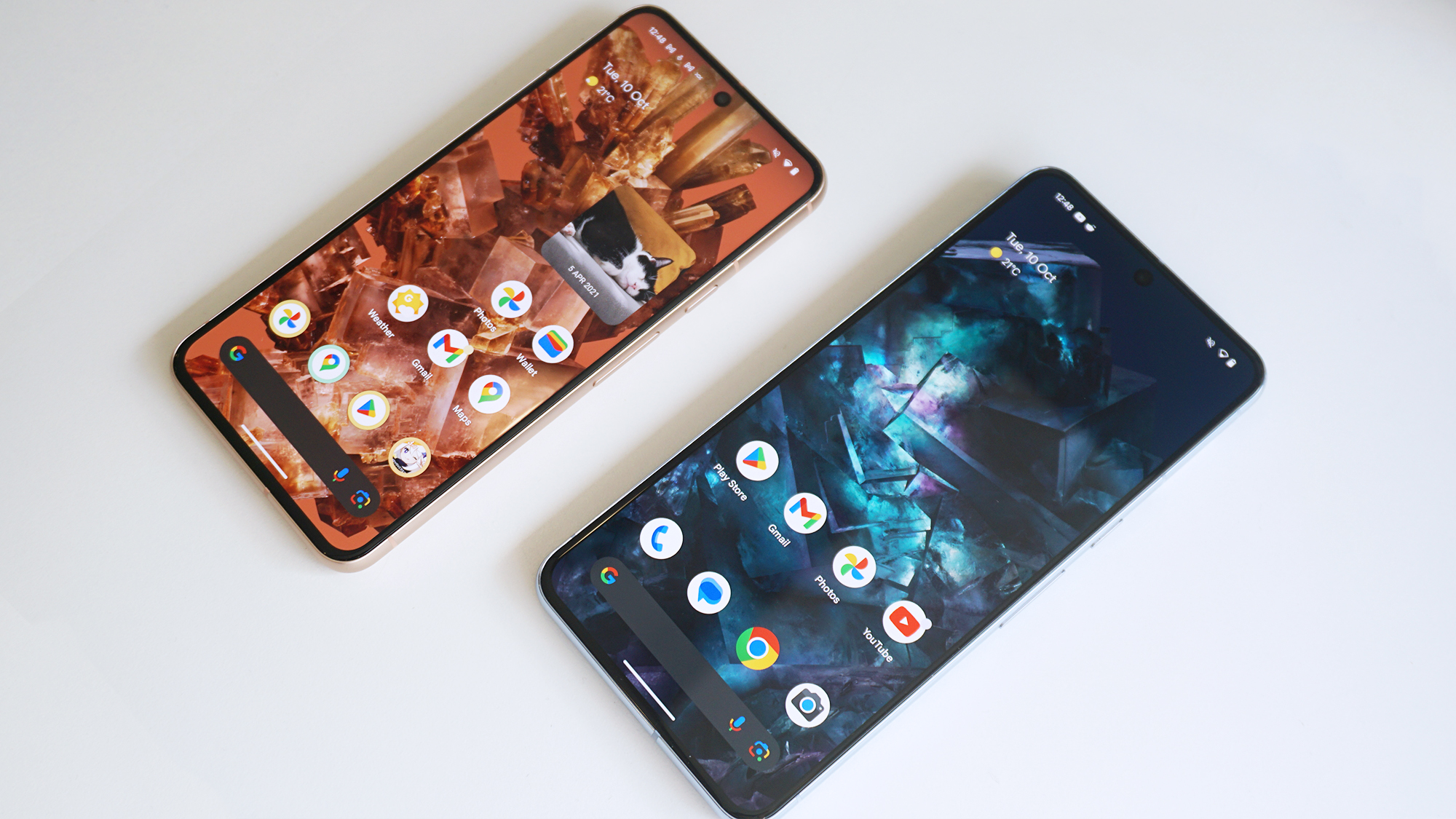
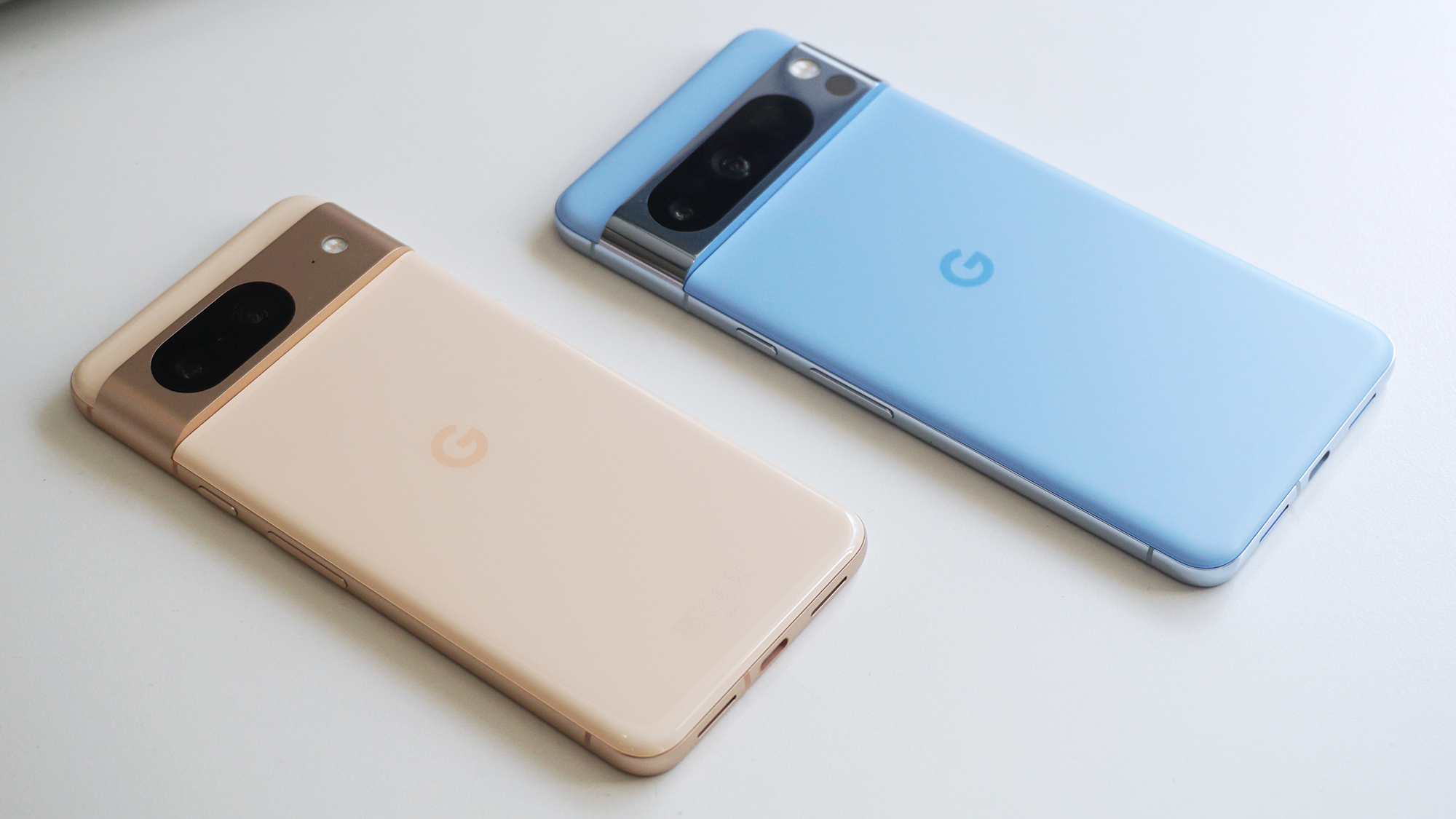
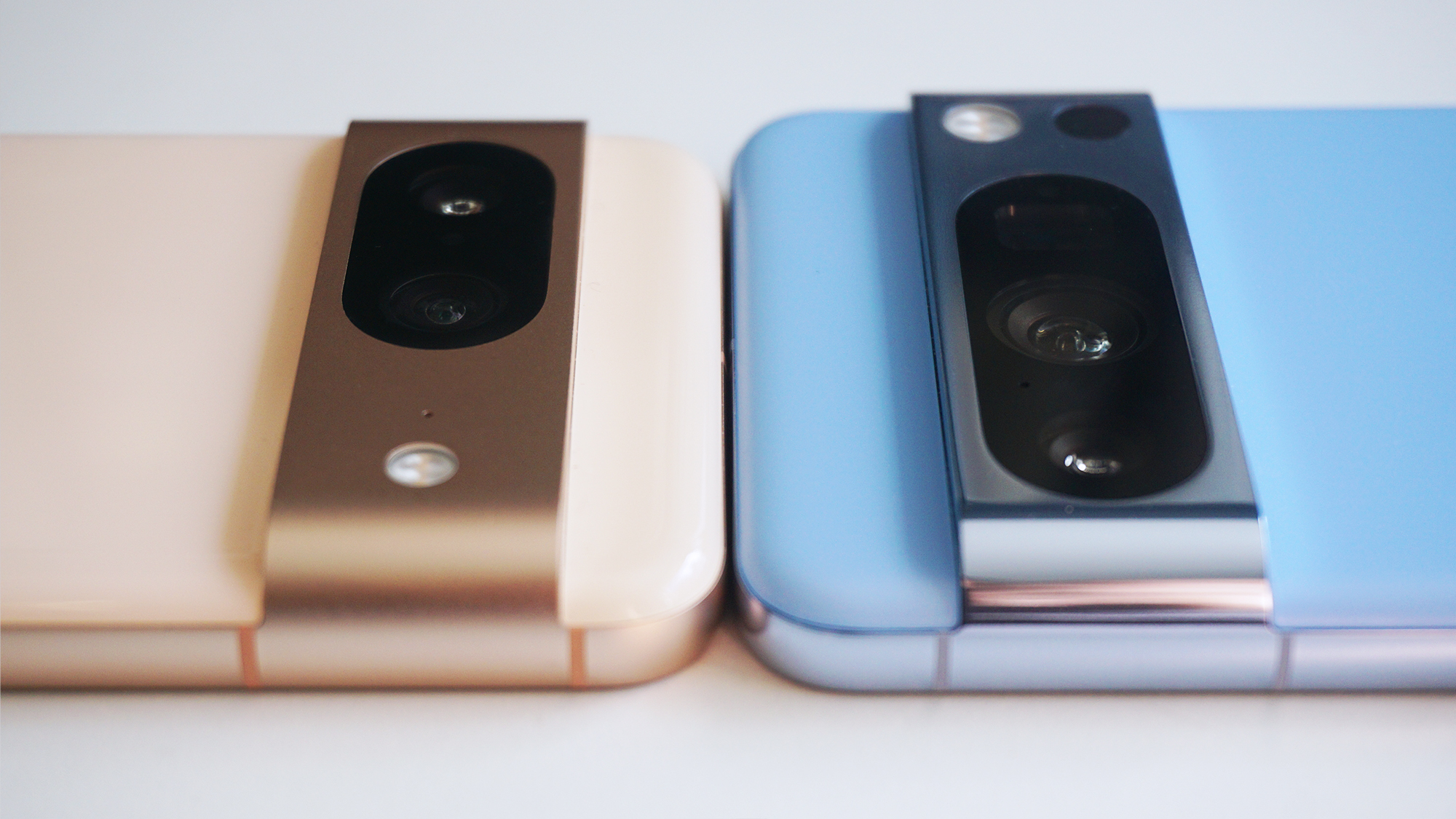
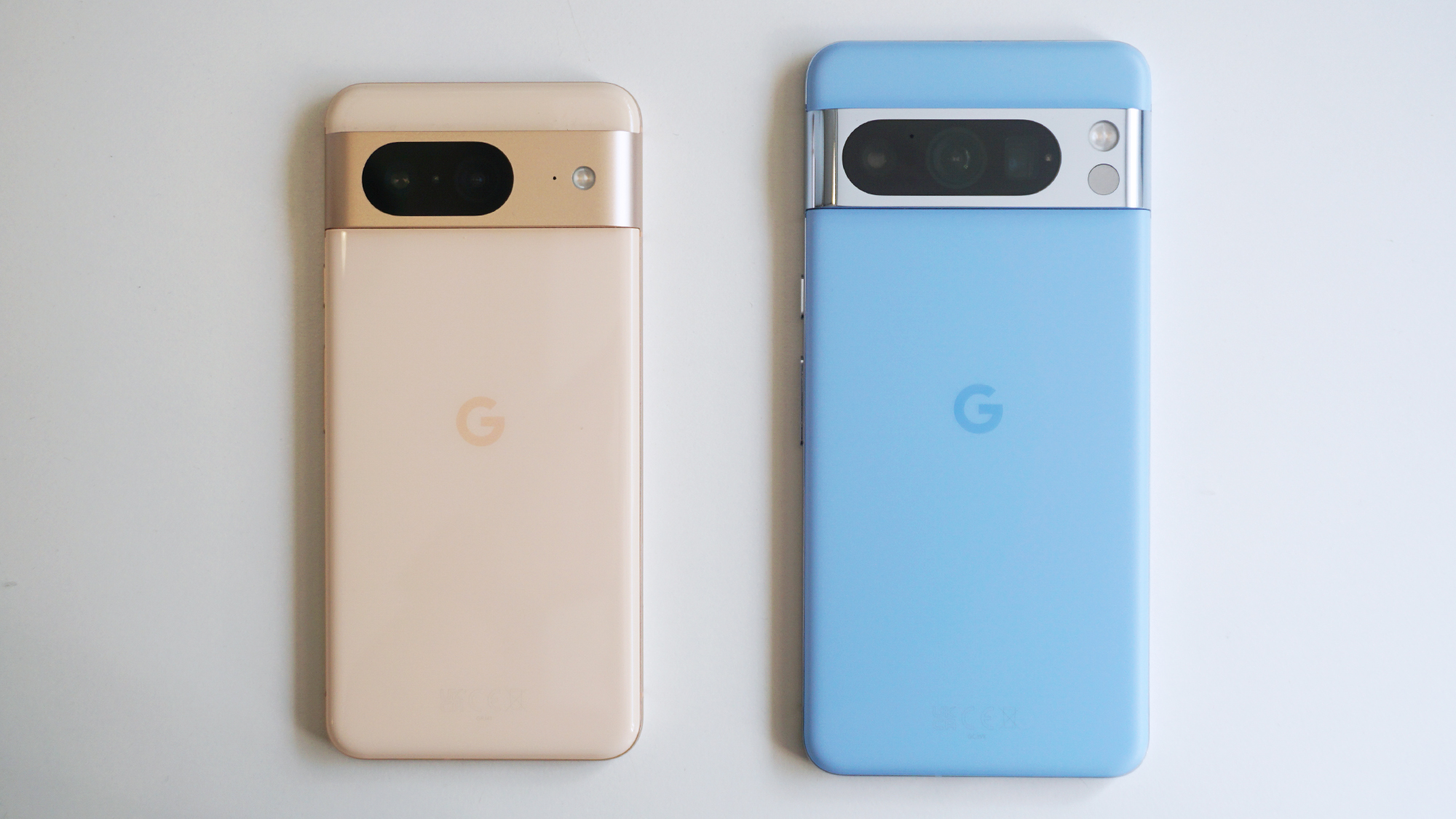
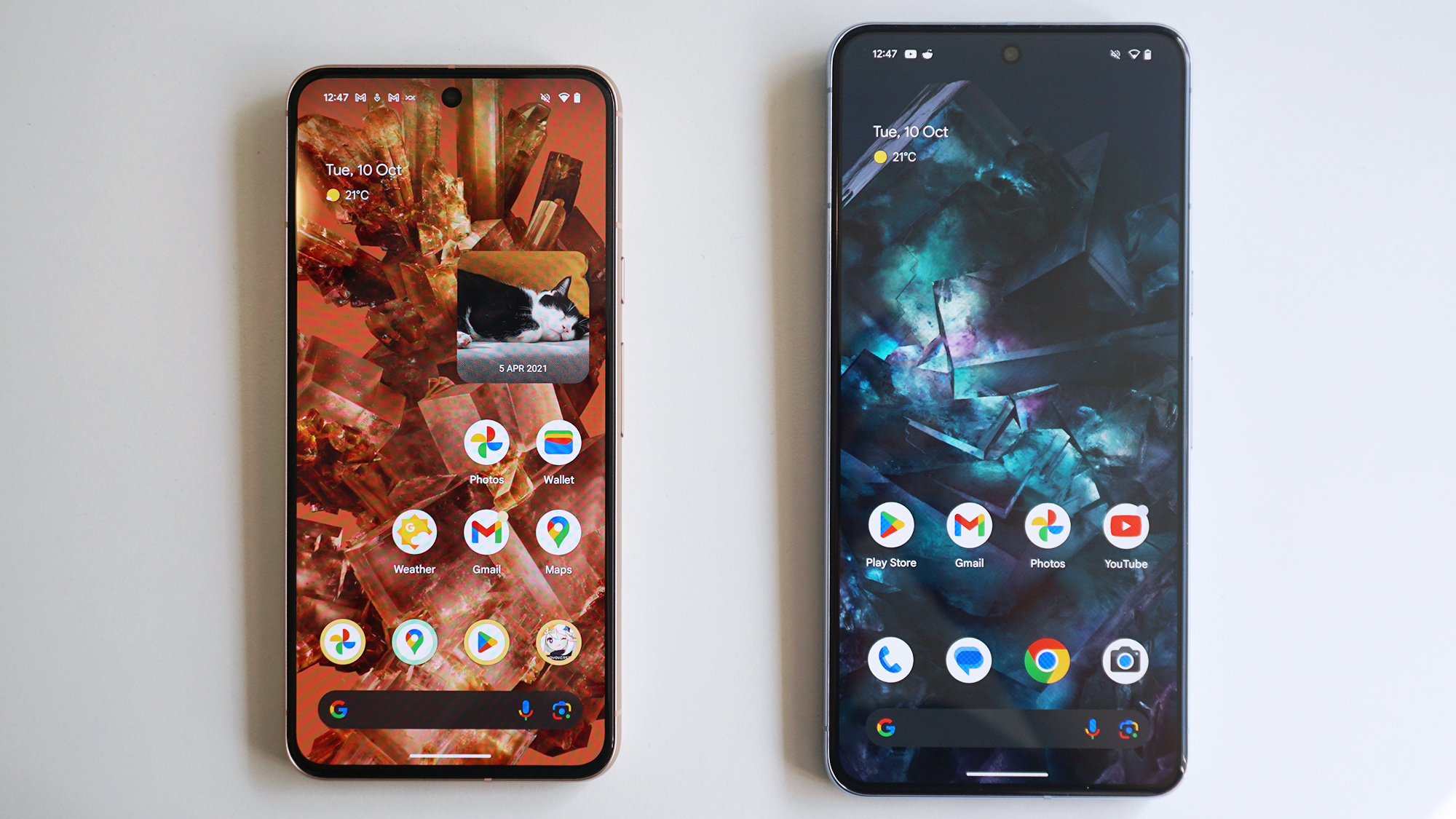
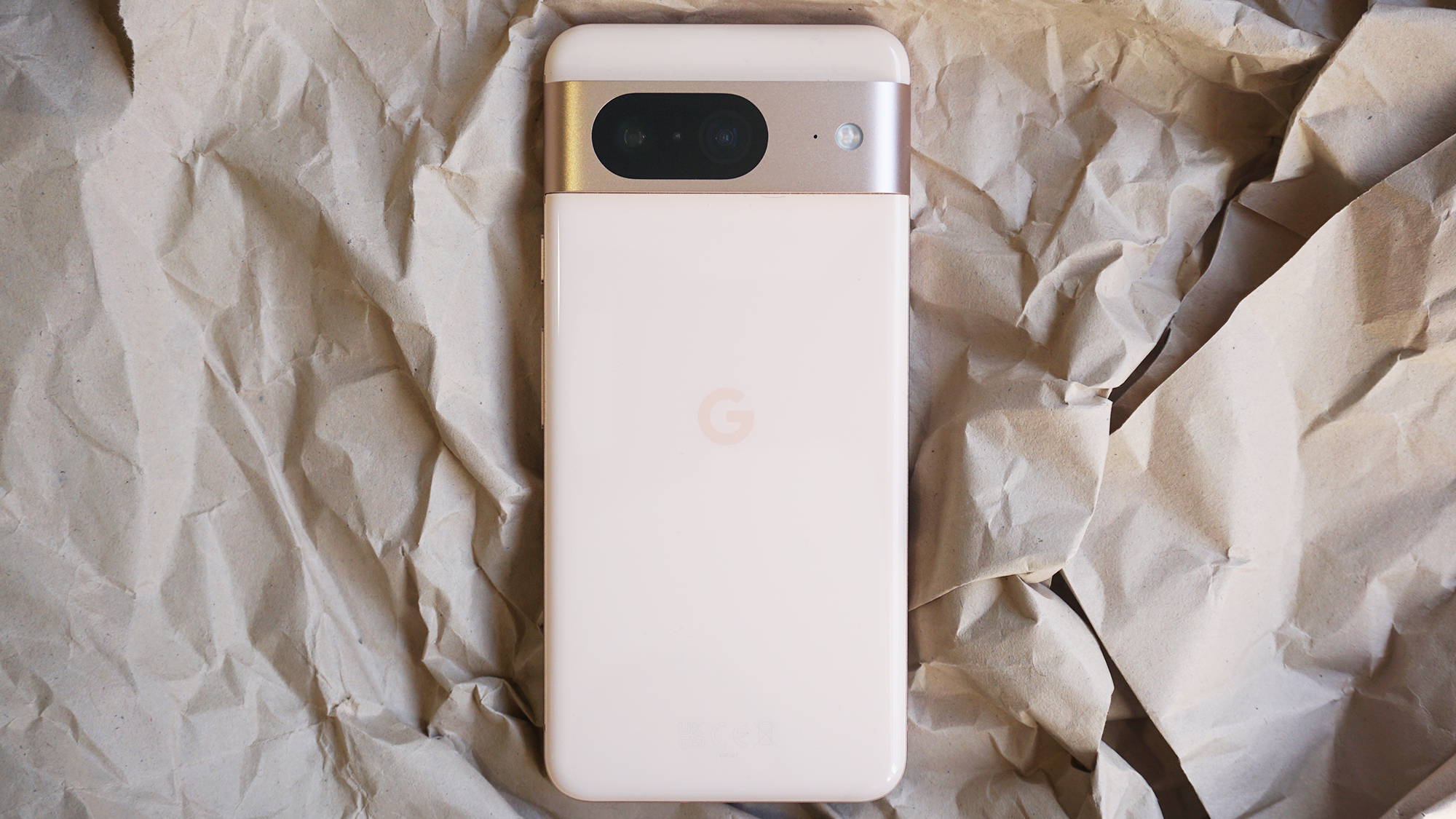
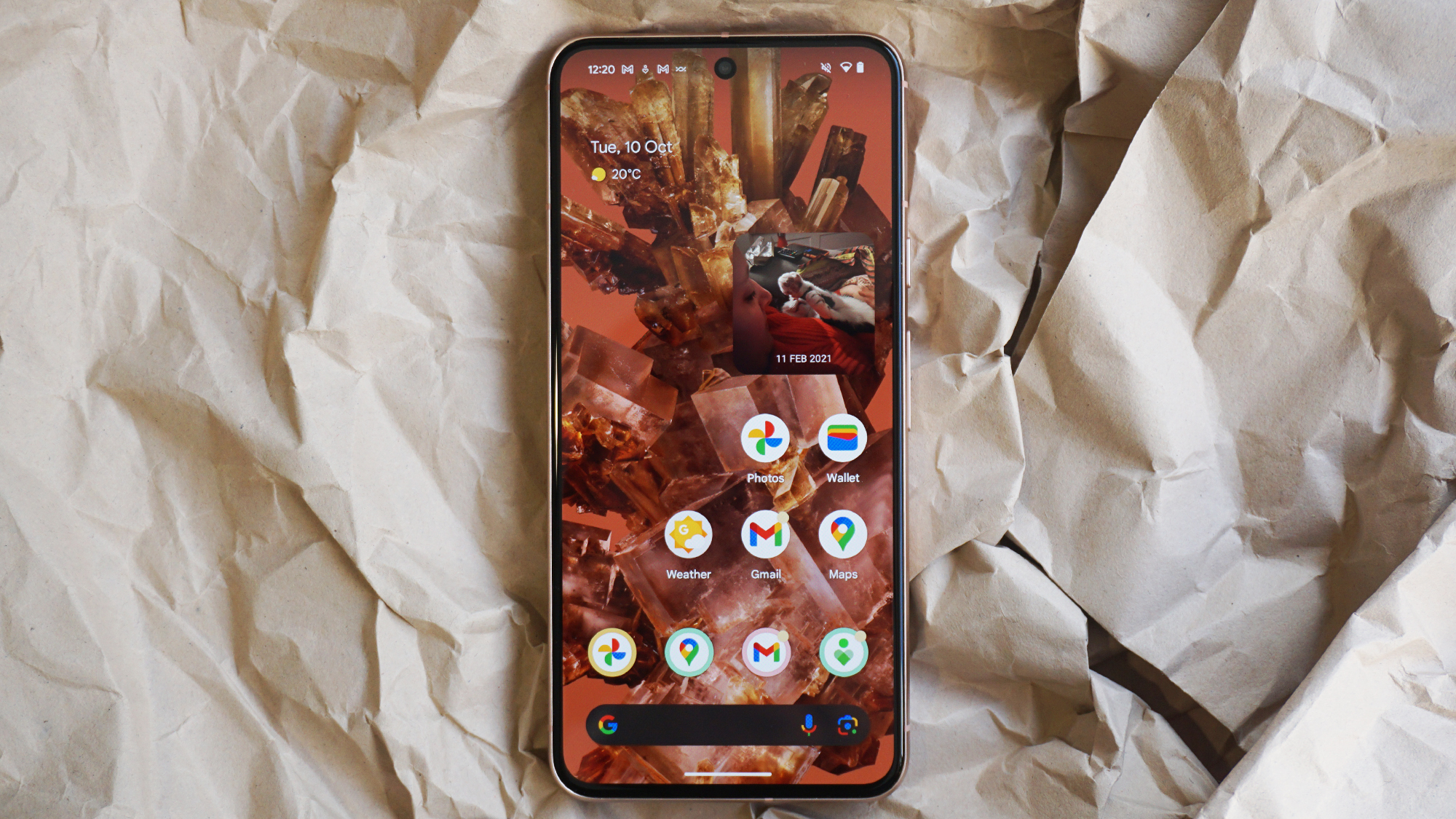
Generationally speaking, while neither phone has reinvented the wheel, the Pixel 8 has adopted more design changes compared to its predecessor, with more rounded forms – especially in the corners – being the most obvious visual alteration. The upgraded look (including a taller aspect ratio compared to the Pixel 7) actually means its silhouette is now not unlike that of the Galaxy S24's.
A polished glass back and a matte aluminum frame offer a nice contrast texturally, while the Pixel line's iconic camera bar juts out of the top third of the phone's back, playing host to the phone's dual rear camera sensor. Whether this is a good or clunky design fixture falls to your aesthetic preferences.
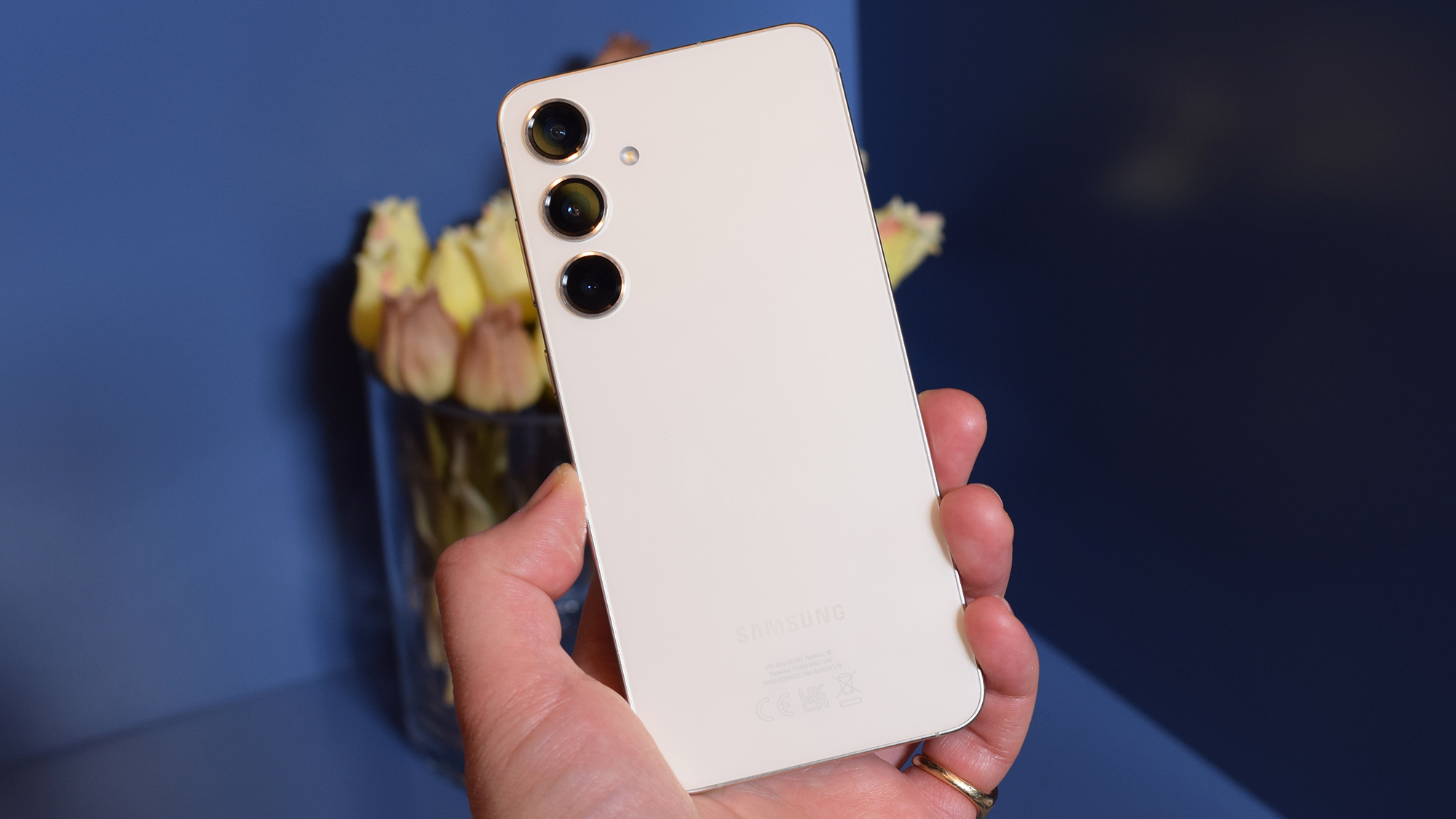
The Galaxy S24, meanwhile, has brought refinement over reinvention, with smaller bezels in exchange for a fractionally larger screen; not to mention flatter sides as well. While retaining familiar facets to those found on the S23, the harder lines mean that it's closer in form to the recent iPhone 15 than its predecessor was, while the Pixel 8's more curvaceous design moves in the opposite direction.
Color-wise, while both phones are muted in their tones, you get more choice with the Samsung Galaxy S24's colors, with Onyx Black, Marble Grey, Cobalt Violet and Amber Yellow on the cards. Samsung also offers additional Sandstone Orange, Jade Green, and Sapphire Blue finishes exclusive to Samsung.com.
By comparison, the Pixel 8 comes in what amounts to pale peach (called Rose), green/gray (Hazel) and dark gray (Obsidian), which makes for a pretty inoffensive but underwhelming assortment of hues.
Both phones though have an IP68 rating, so they have a similar level of dust and water resistance.
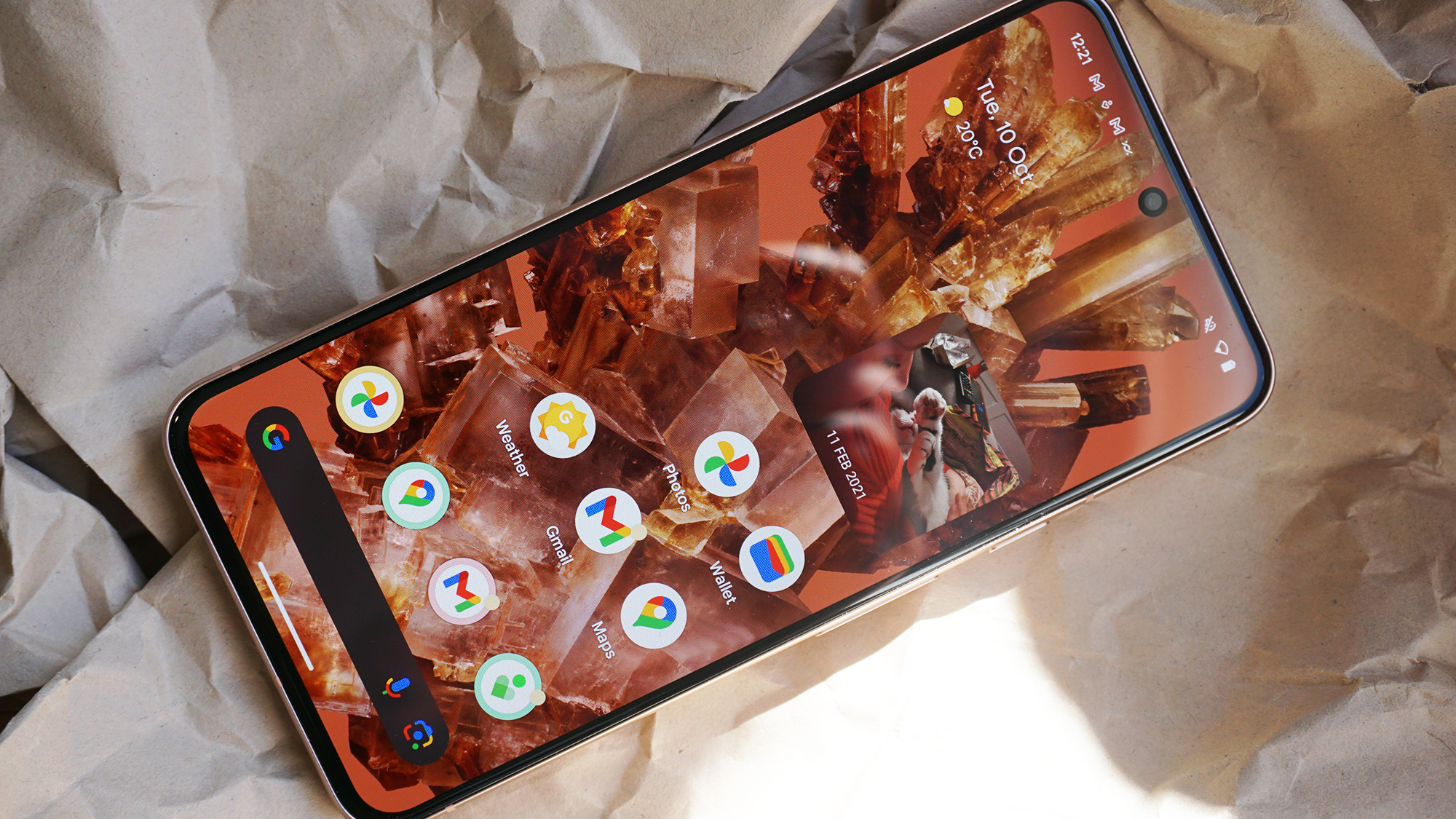
As for the displays, the Pixel 8 has dropped 0.1 of an inch from its predecessor's panel to reach 6.2-inches, while – along with those thinner bezels – the S24's screen has actually come up by 0.1-inches from the S23, to match the Pixel at 6.2-inches, as well.
Where display technology is concerned, the Pixel 8 brought a long overdue upgrade to the refresh rate, finally pushing past the 90Hz limit of its predecessors; topping out at 120Hz. However, this isn't a dynamic trait, meaning you have to manually switch between 60Hz and smoother 120Hz viewing, depending on whether you want to extend battery life. Beyond refresh rate, the Full HD+ OLED panel also boasts impressive peak brightness of 2,000 nits, and there's an always-on mode too.
The Samsung Galaxy S24 though trumps this, with a 1Hz-120Hz dynamic refresh rate, and a peak brightness of 2,600 nits, as well as its own always-on display mode. Both phones have a similar FHD+ resolution though, so there's nothing really to choose on that front.
Samsung Galaxy S24 vs Google Pixel 8: cameras
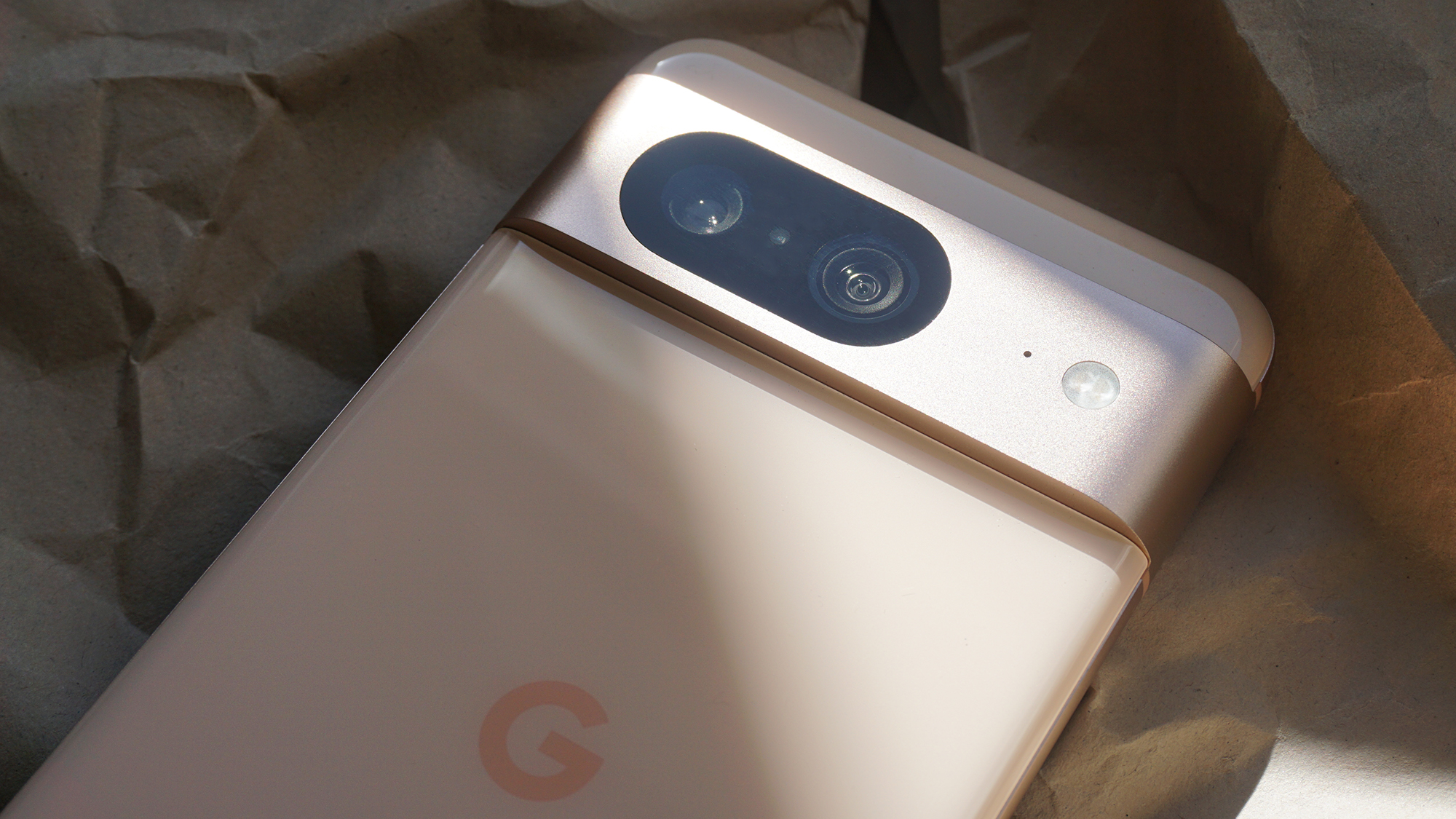
In testing, we commended the Pixel 8's cameras for their "consistency with regards to color, dynamic range and contrast," even going so far as to suggest that the phone packed "a more dependable set of cameras than on the likes of Samsung's Galaxy S23 handsets." That dependability being borne out of the company's existing expertise in image processing and the advancements in AI-supported photography features that we've seen added since the Pixel 6 series.
The phone leads with a wider-apertured 50MP primary sensor (compared to its predecessor), accompanied by a 12MP ultra-wide with autofocus (an upgrade pulled from the Pixel 7 Pro), while its enhanced digital 'Super Res Zoom' range peaks at 8x magnification; producing results that are genuinely pleasing to the eye and wholly usable.
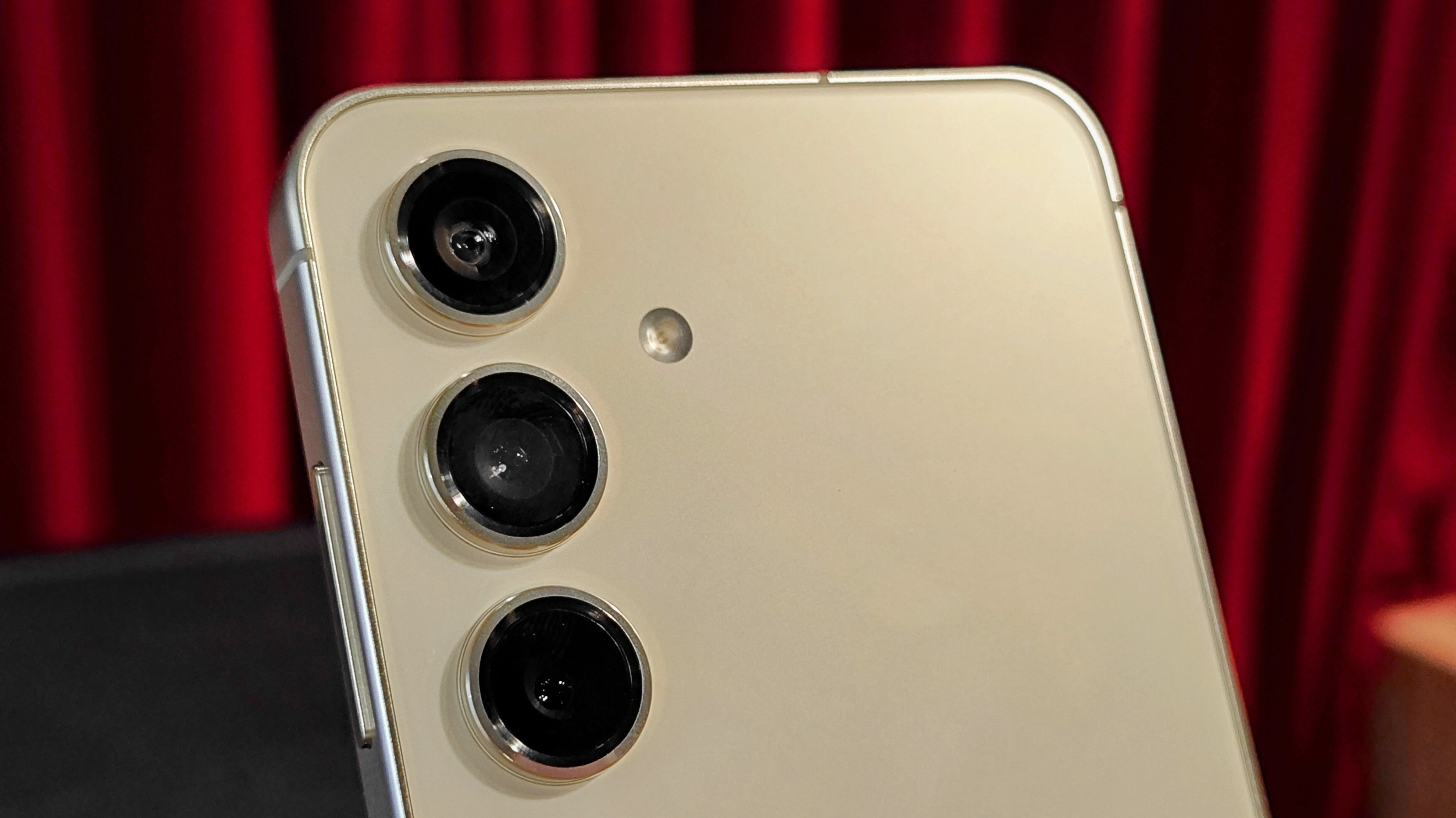
The camera hardware on the Galaxy S24 is almost identical to the S23's, meaning a 50MP main sensor with a fractionally wider focal range but a narrower aperture – compared to the Pixel's 50MP snapper (24mm and ƒ/1.8 versus 25mm, ƒ/1.7).
The S24's 12MP ultra-wide lacks the autofocus of the Pixel's equivalent, but at the same time this phone gives that Super Res Zoom a run for its money with a dedicated third sensor, boasting a 10MP resolution and 3x optical telephoto zoom range.
That third sensor is especially helpful, leading us in our Galaxy S24 review to describe its cameras as the "most versatile cameras on a phone this price."
Moving around to the front, you get a 12MP snapper on the Samsung Galaxy S24 and a 10.5MP one on the Pixel 8.
Both phones though benefit from various AI photography tools. In the case of the Pixel 8 we found them generally impressive, while the Galaxy S24's are more a mix of "cool and useless" according to our Samsung Galaxy S24 review.
Google Pixel 8 camera samples


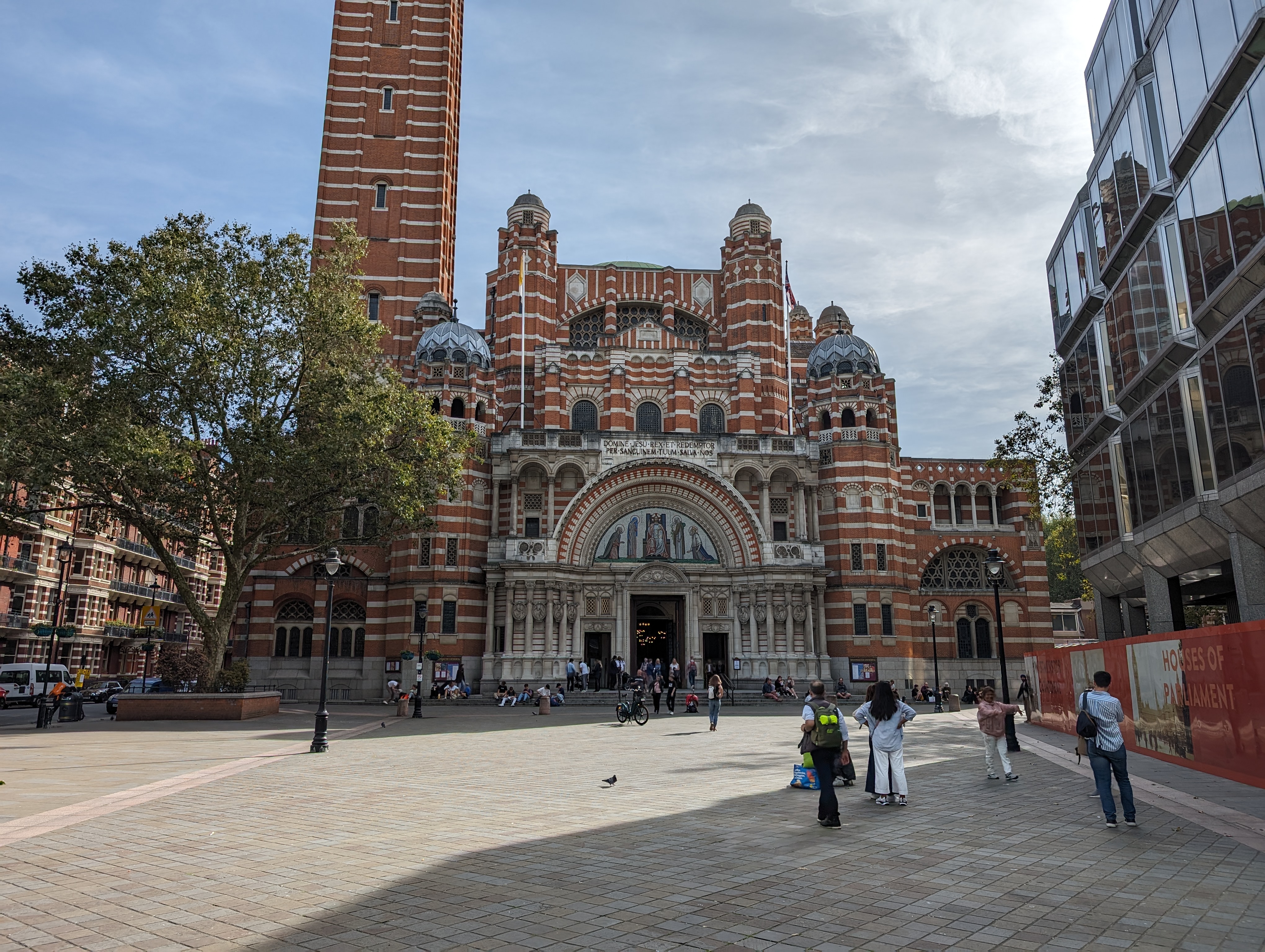



Ultra-wide
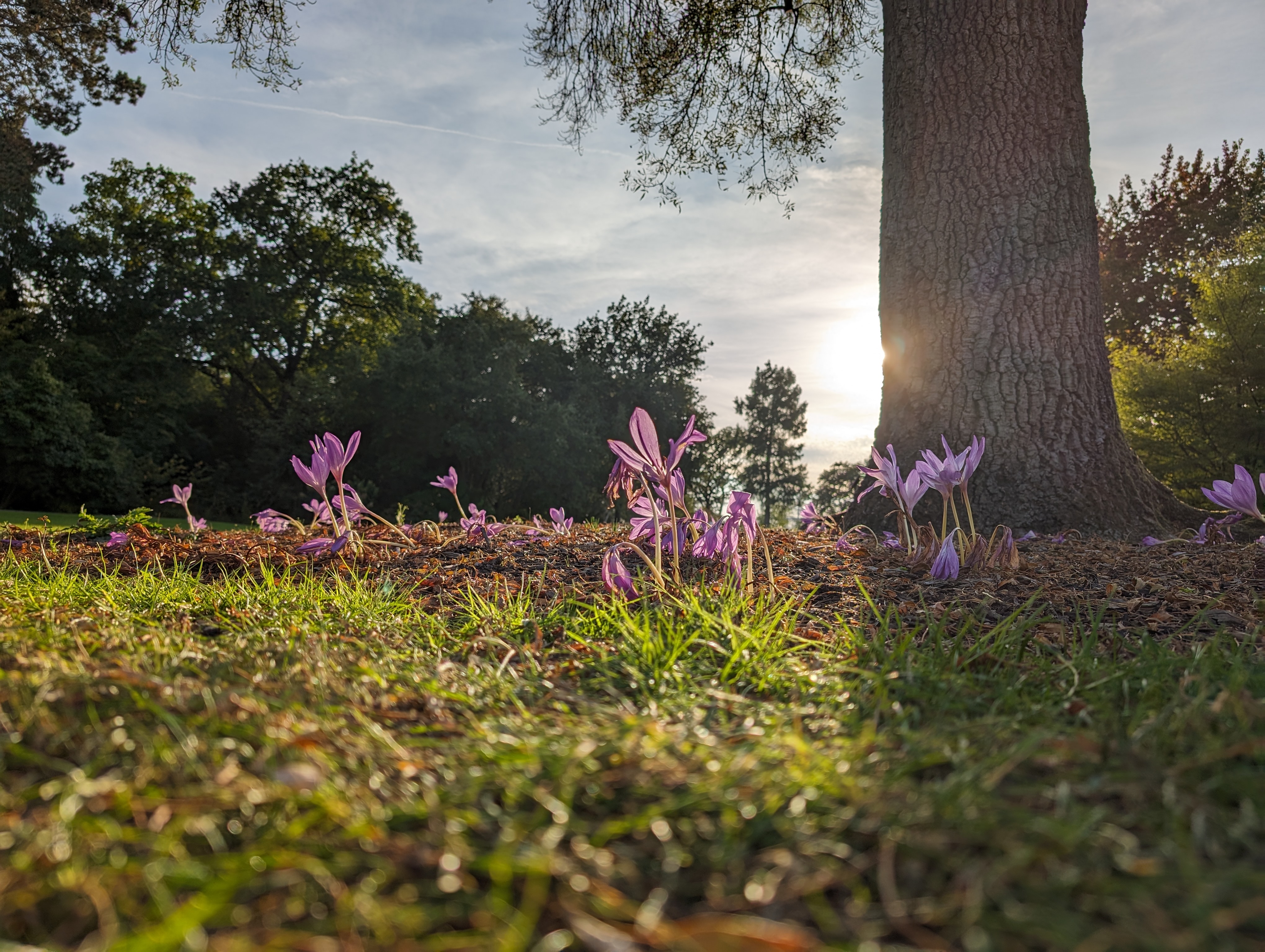
Main camera

2x zoom

8x zoom
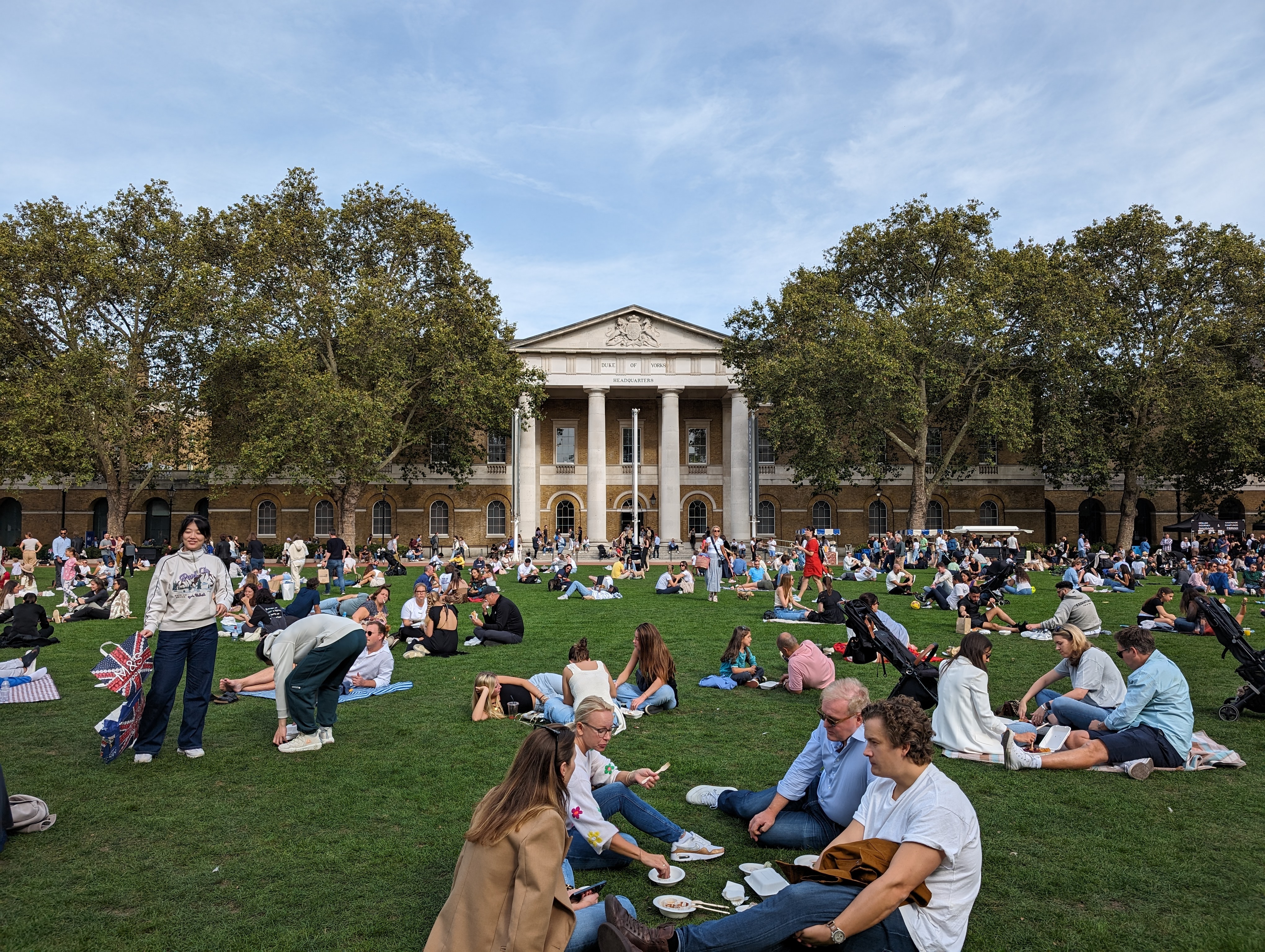
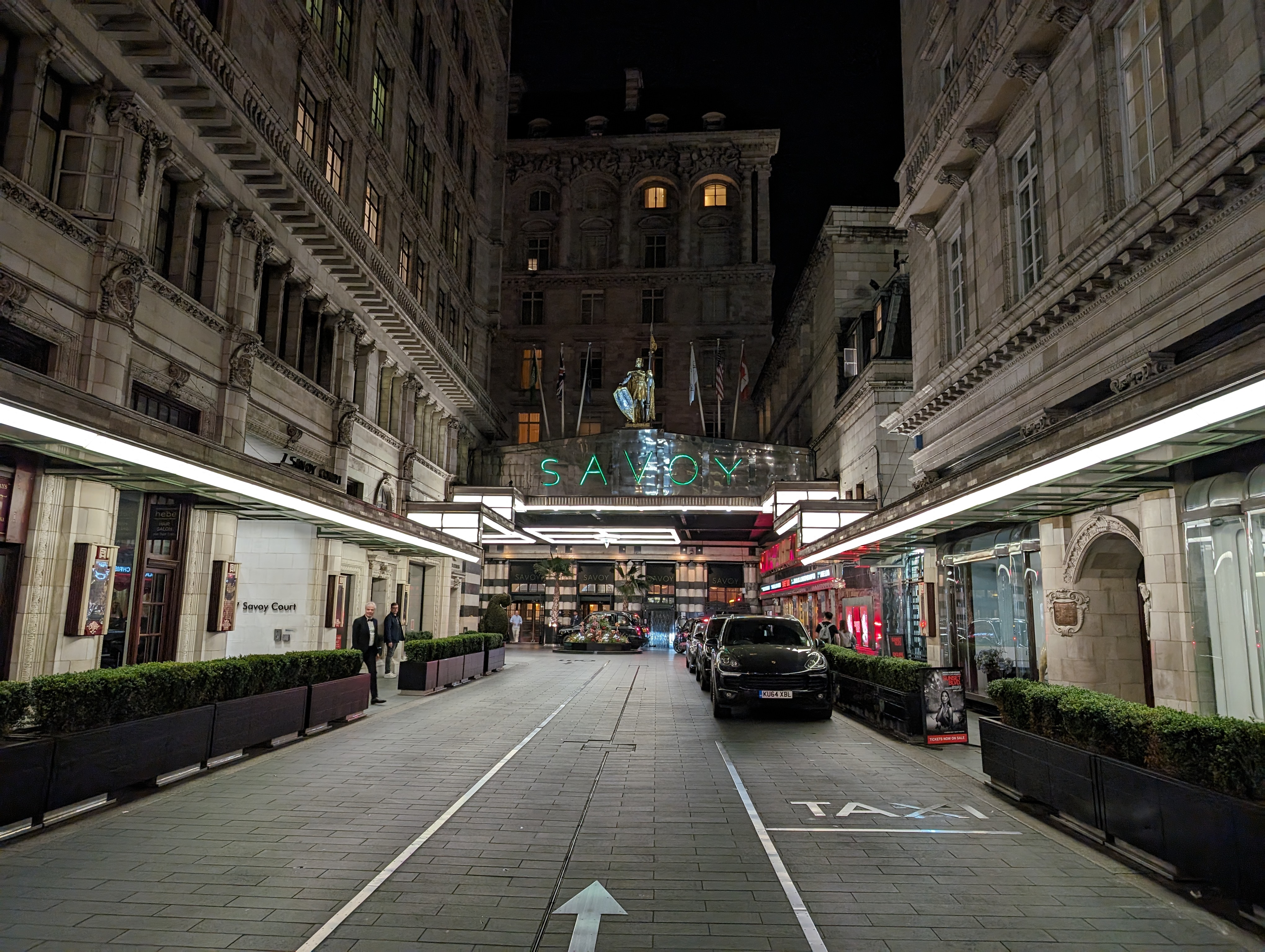
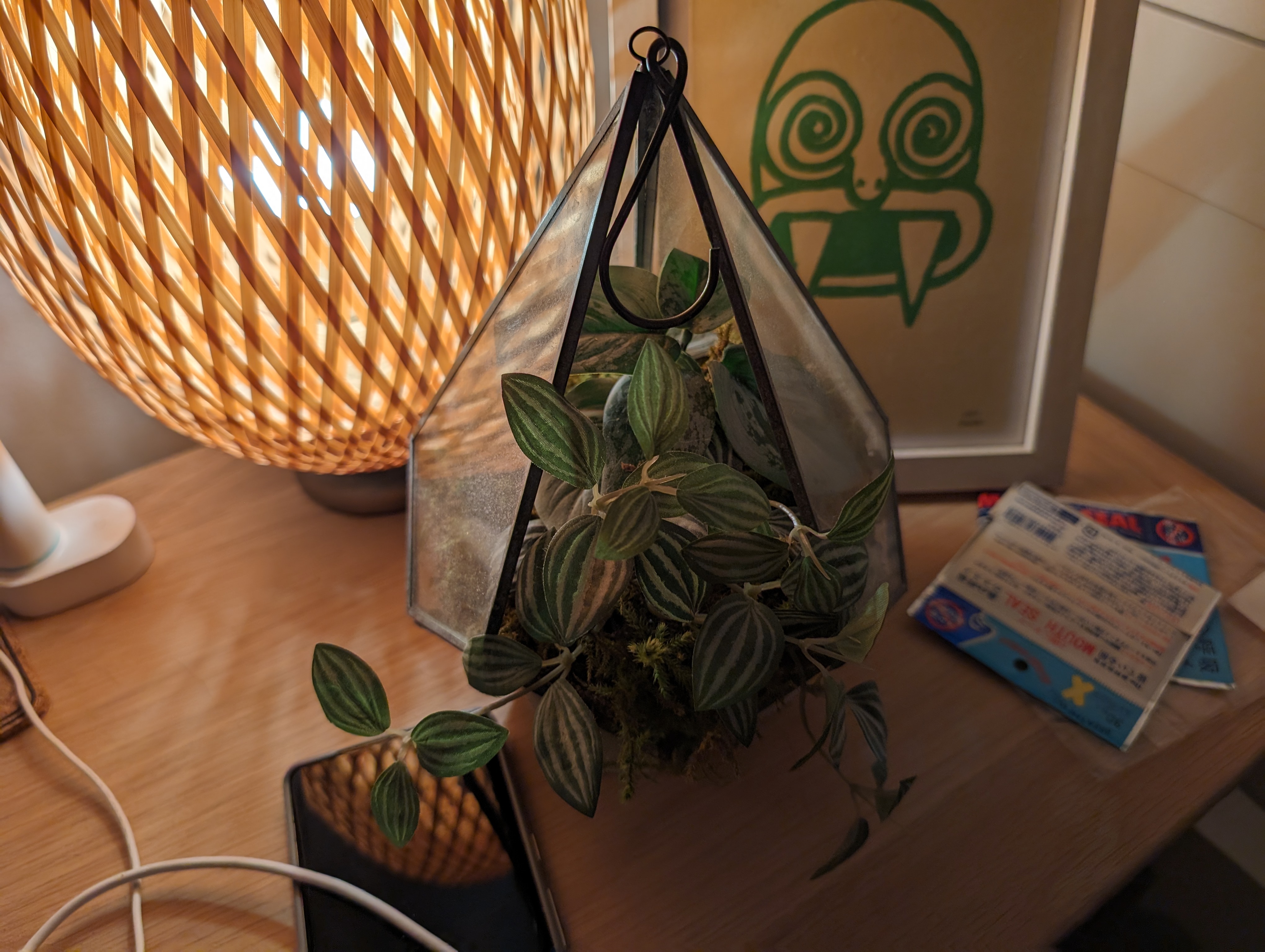

Portrait mode on main camera

Front camera

Portrait mode on front camera
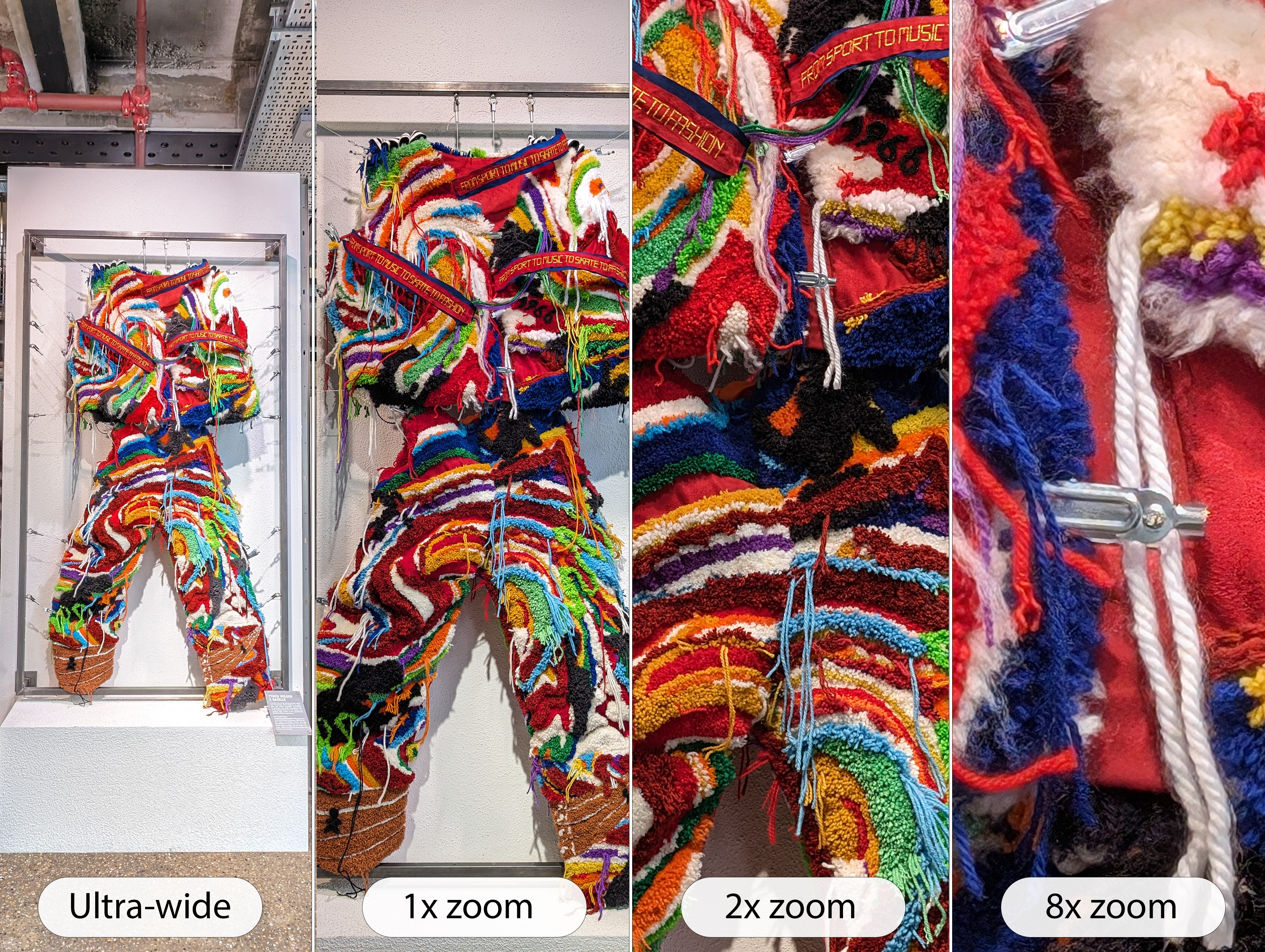
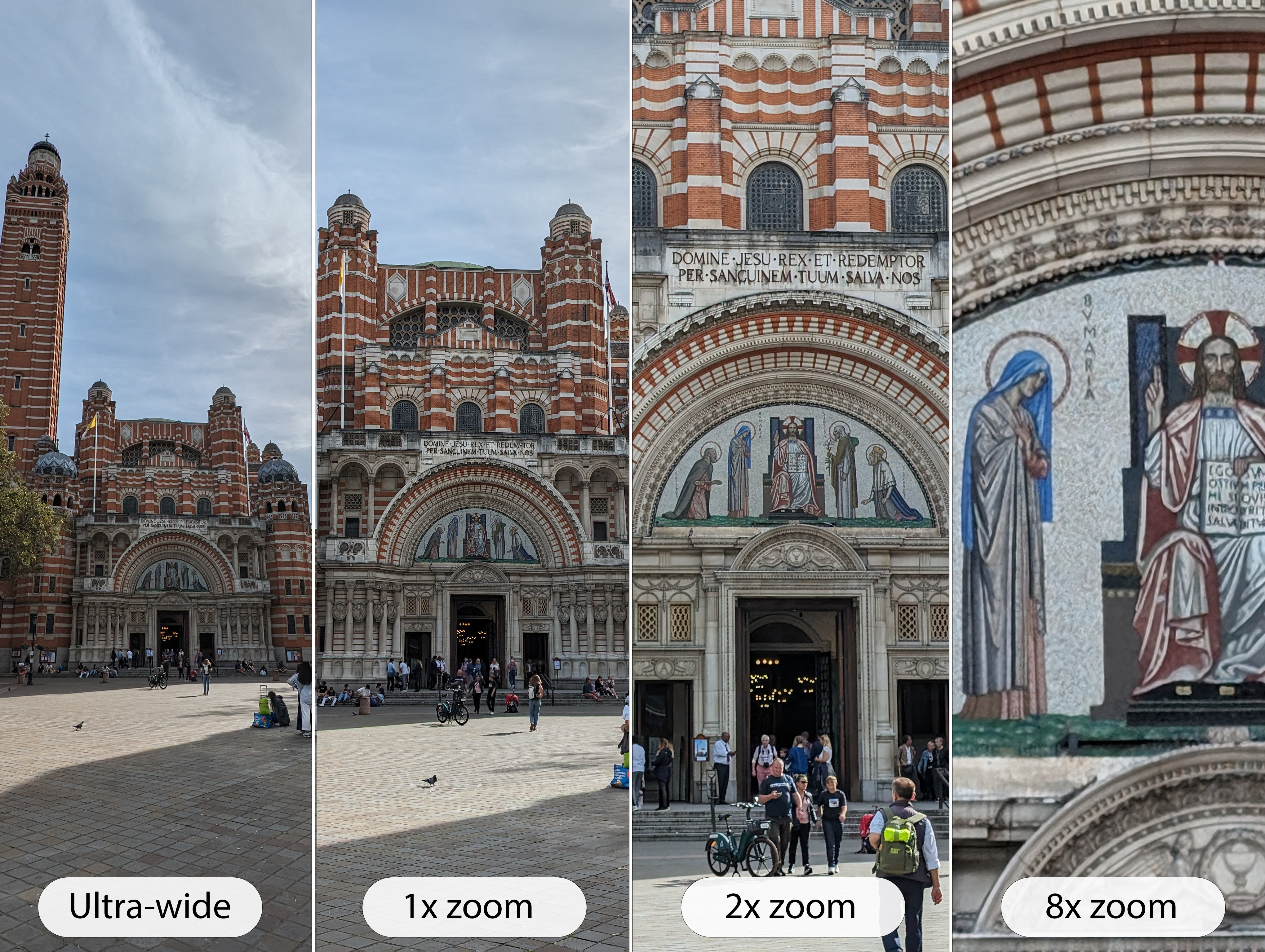
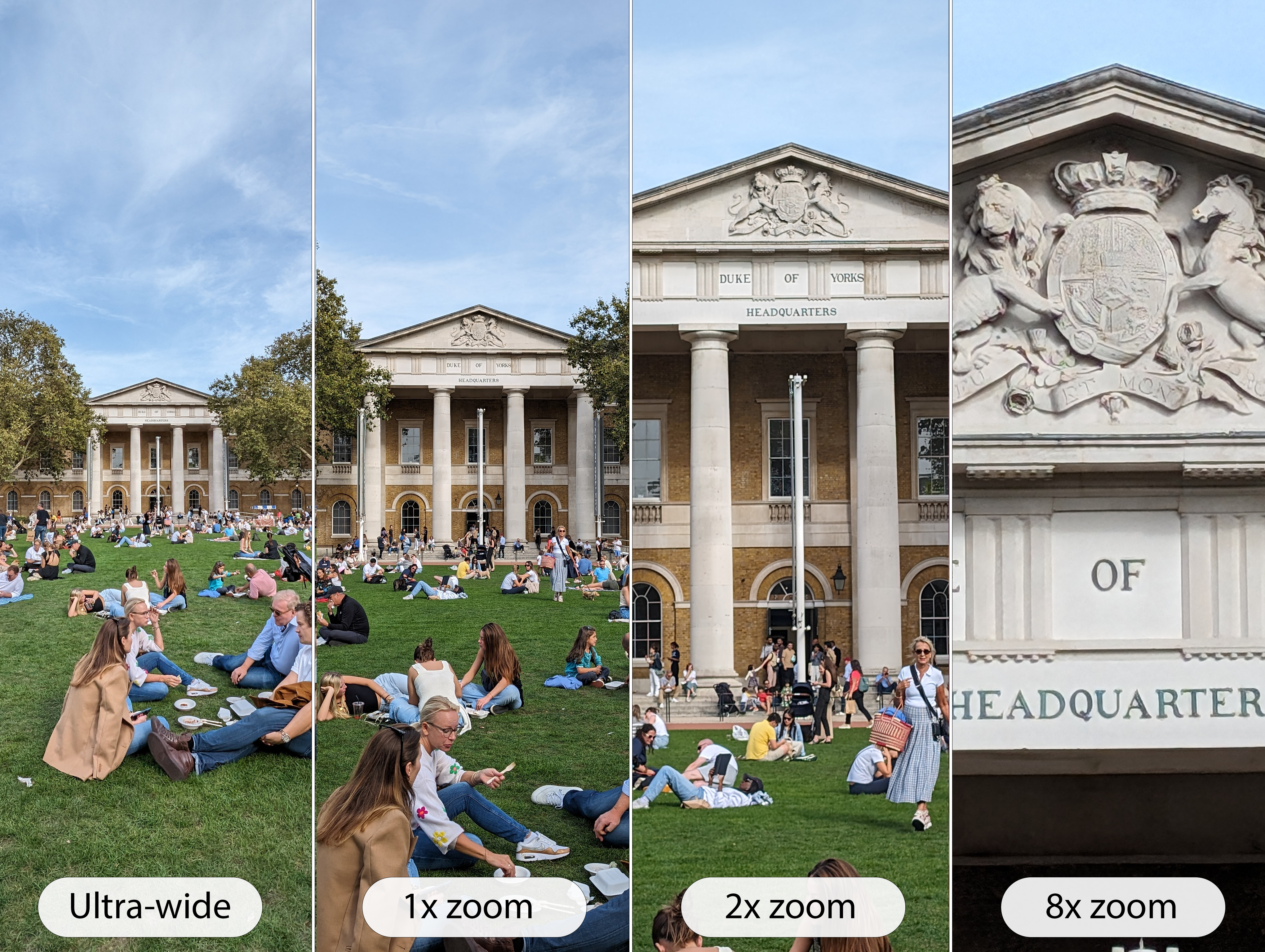

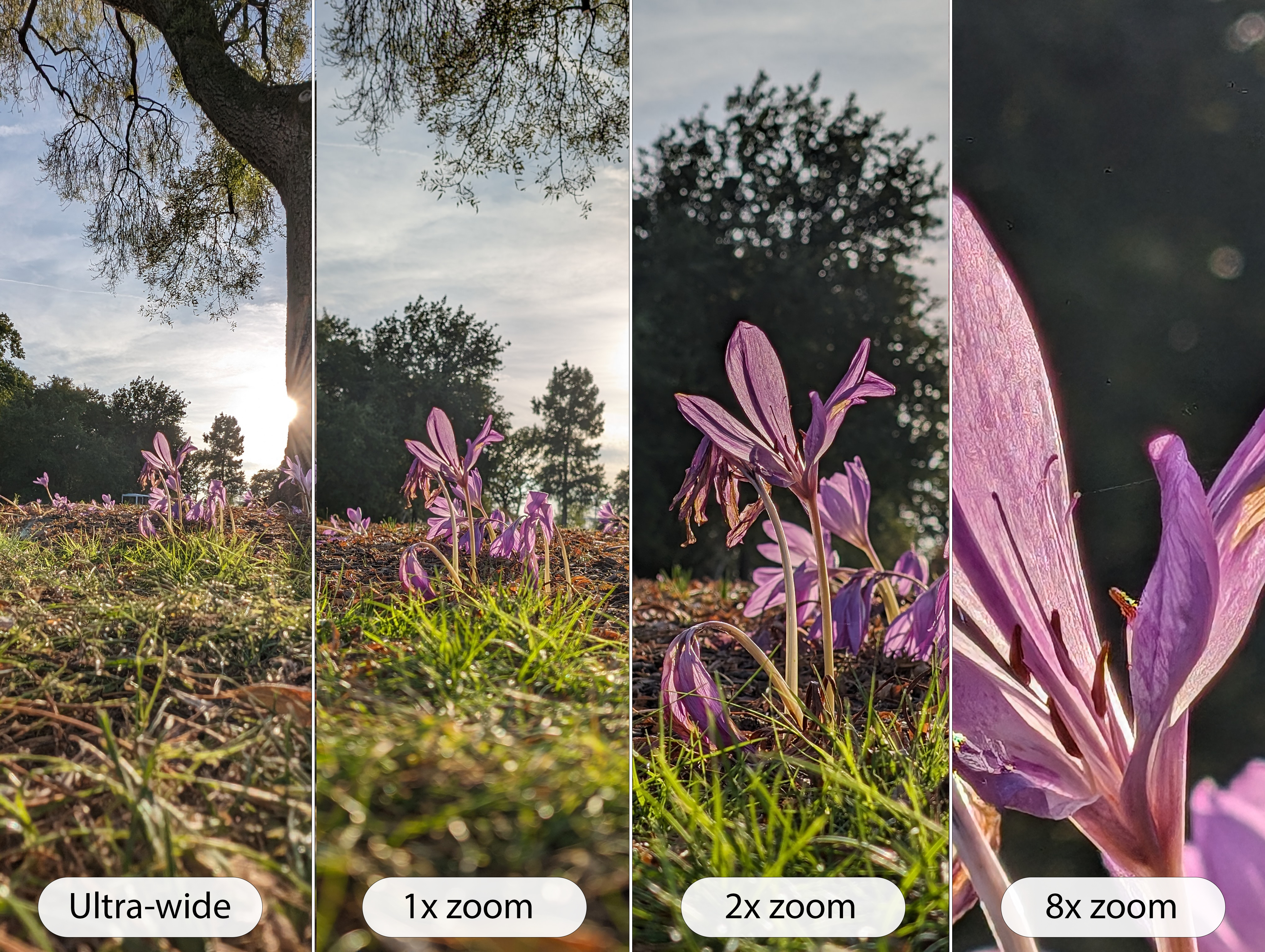
Samsung Galaxy S24 vs Google Pixel 8: performance
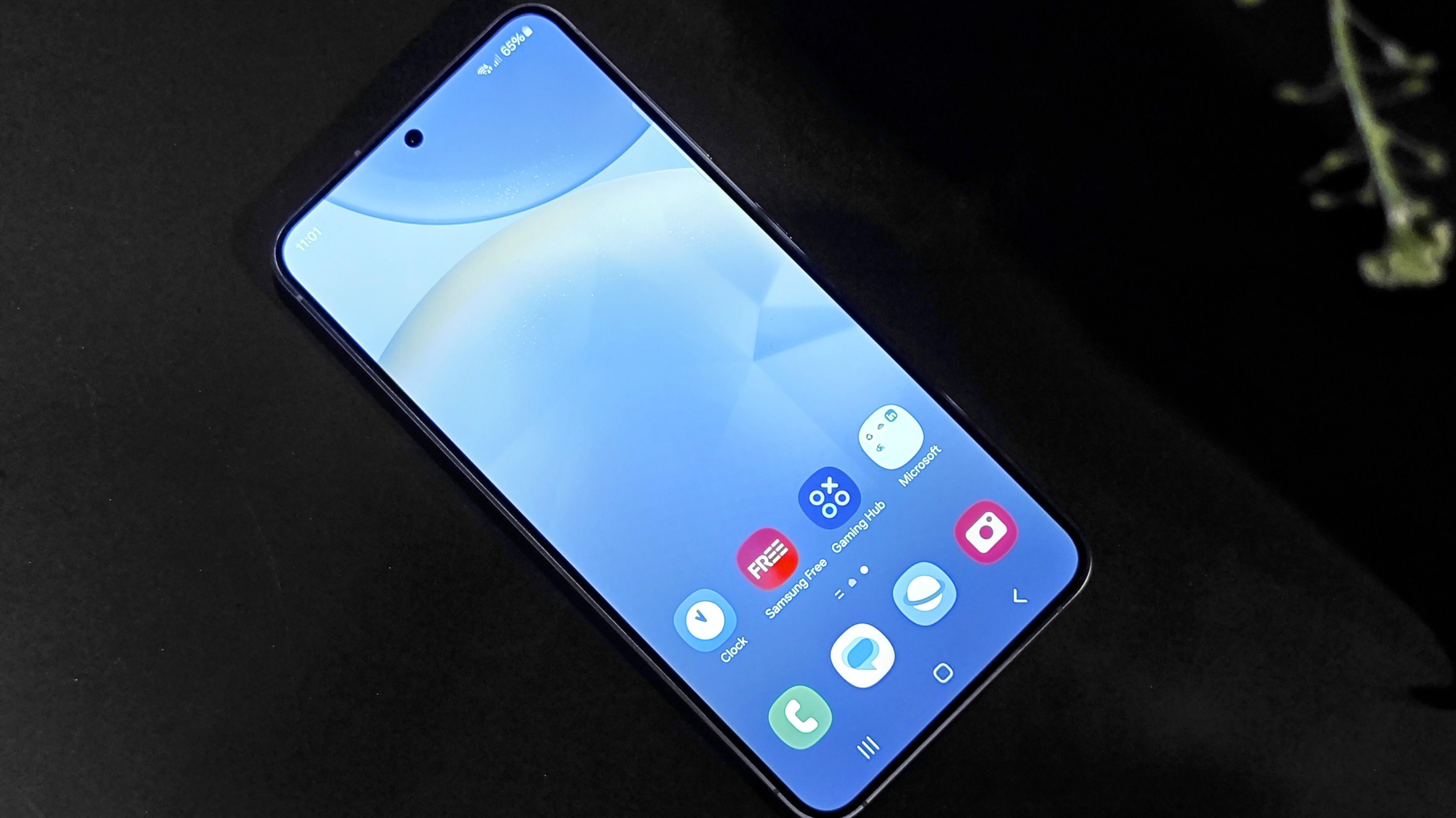
Samsung's Galaxy S series is known for its raw power, usually being among the first series of phones each calendar year to adopt Qualcomm's latest flagship silicon. That's the case with the S24 series too, at least in some parts of the world.
Qualcomm's current top chip – the Snapdragon 8 Gen 3 – is powering the Galaxy S24 series in markets like the US. However, not unlike the Galaxy S22 series, Samsung's own Exynos silicon – specifically the Exynos 2400, which was announced in October 2023 – is powering the standard Galaxy S24 and Galaxy S24 Plus in markets including Europe and the UK.
While both the Snapdragon and Exynos look like powerful and comparable chips in their own right, in practice, previous generations of Galaxy have shown us that Samsung's chips consistently underperform against Qualcomm's. That said, even an Exynos 2400-powered S24 should handily outperform its predecessor.
We've only reviewed the Snapdragon version, but we were impressed by that, noting it offered "excellent performance, nearly matching the Galaxy S24 Ultra."
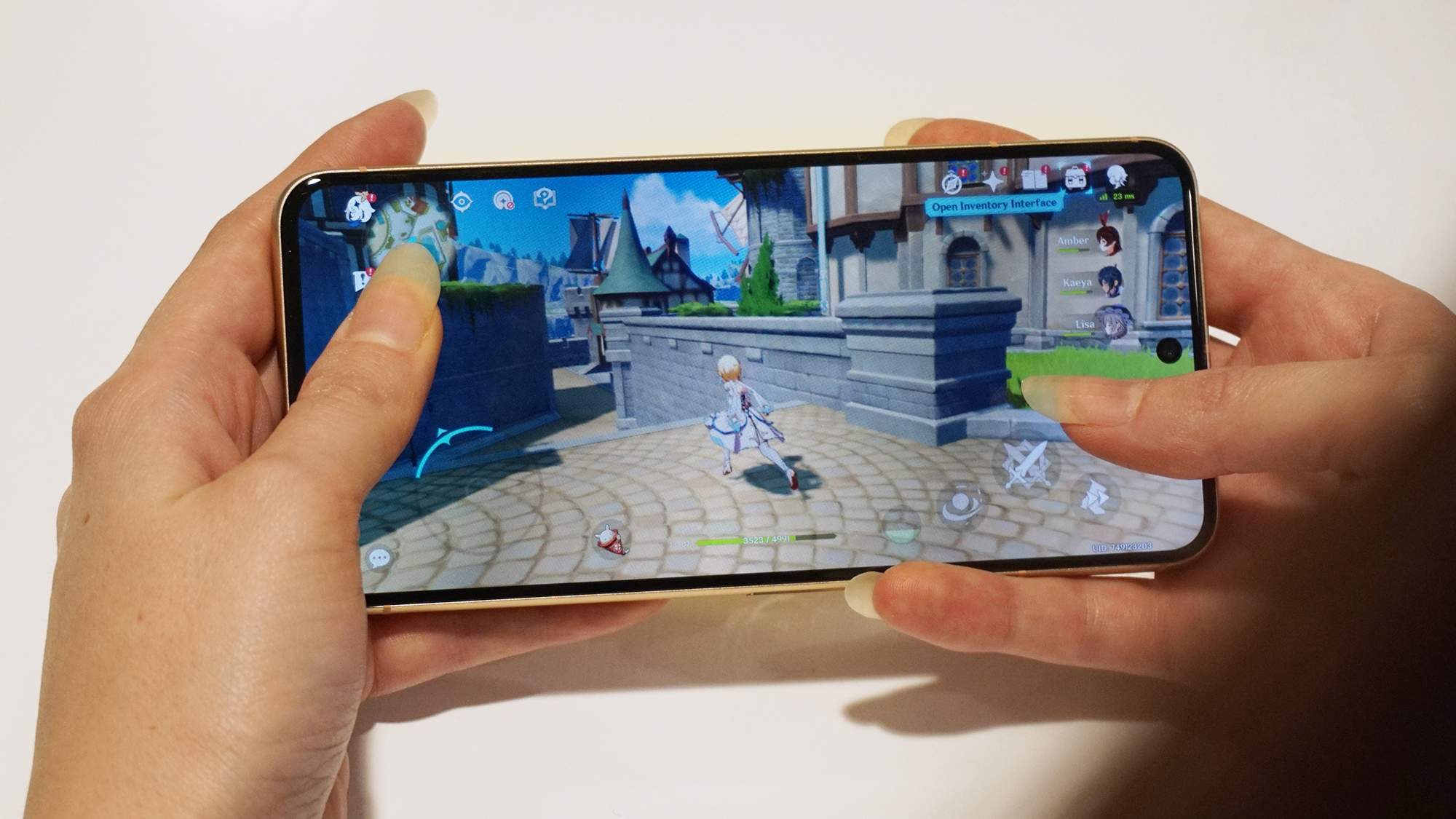
Where Samsung's Galaxy S phones are considered generalist powerhouses, Google's Tensor chips – which have powered the last three generations of Pixel – forgo outright clout for more specialist advantages in AI. Or at least, that was previously the case, but the Galaxy S24 is packed full of AI skills too, so the Pixel doesn't have as much of an edge here anymore.
If it's gaming and performance that you favor, however, the Galaxy S24 leads, with Samsung's software-based gaming enhancements and the power disparity it can lord over the Pixel.
Samsung Galaxy S24 vs Google Pixel 8: battery life
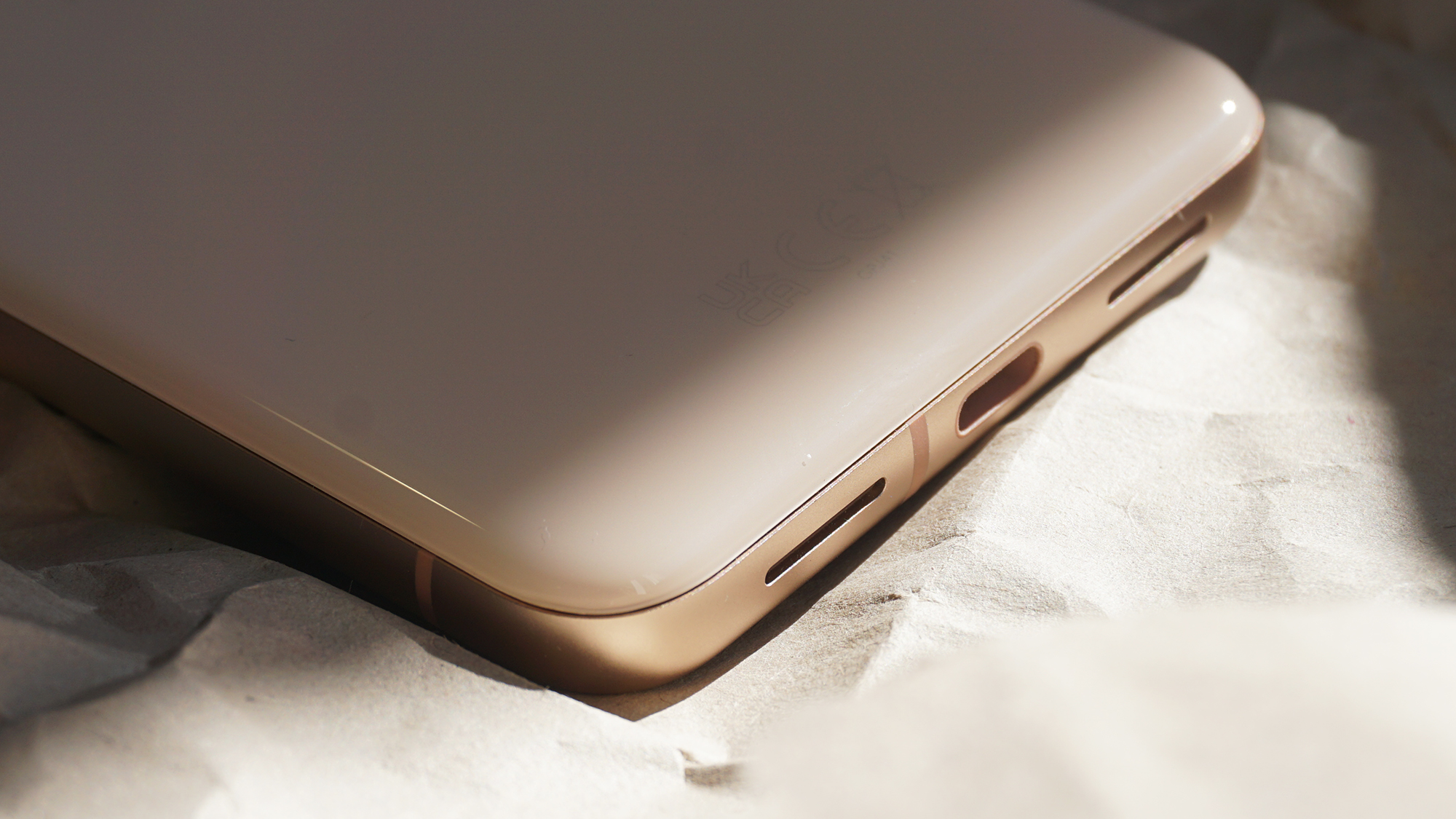
Neither Google or Samsung are known for pushing super-fast charging speeds on their phones, instead focusing on power optimization and minimizing long-term battery degradation to help make their devices better value long-term purchases.
In the case of the Galaxy S24, you'll get a 4,000mAh battery, up from 3,900mAh in the Samsung Galaxy S23. Charging though is the same as last year, with 25W wired, 15W wireless, and 4.5W reverse wireless charging on offer. Once again, the larger and more powerful Galaxy S24 Plus and Galaxy S24 Ultra benefit from faster 45W wired charging speeds.
The Pixel 8 promises similar 27W wired charging speeds, as well as up to 18W wireless and support for reverse wireless charging too, with a 4,575mAh battery that delivered over six hours of screen-on time per charge in testing, reached 54% charge in 30 minutes and hit 100% charge after 1 hour 23 minutes. For comparison, the Galaxy S24 "lasted until bed time with no trouble" on a normal day of use, and also surpassed 50% charging in 30 minutes.
Samsung Galaxy S24 vs Google Pixel 8: verdict
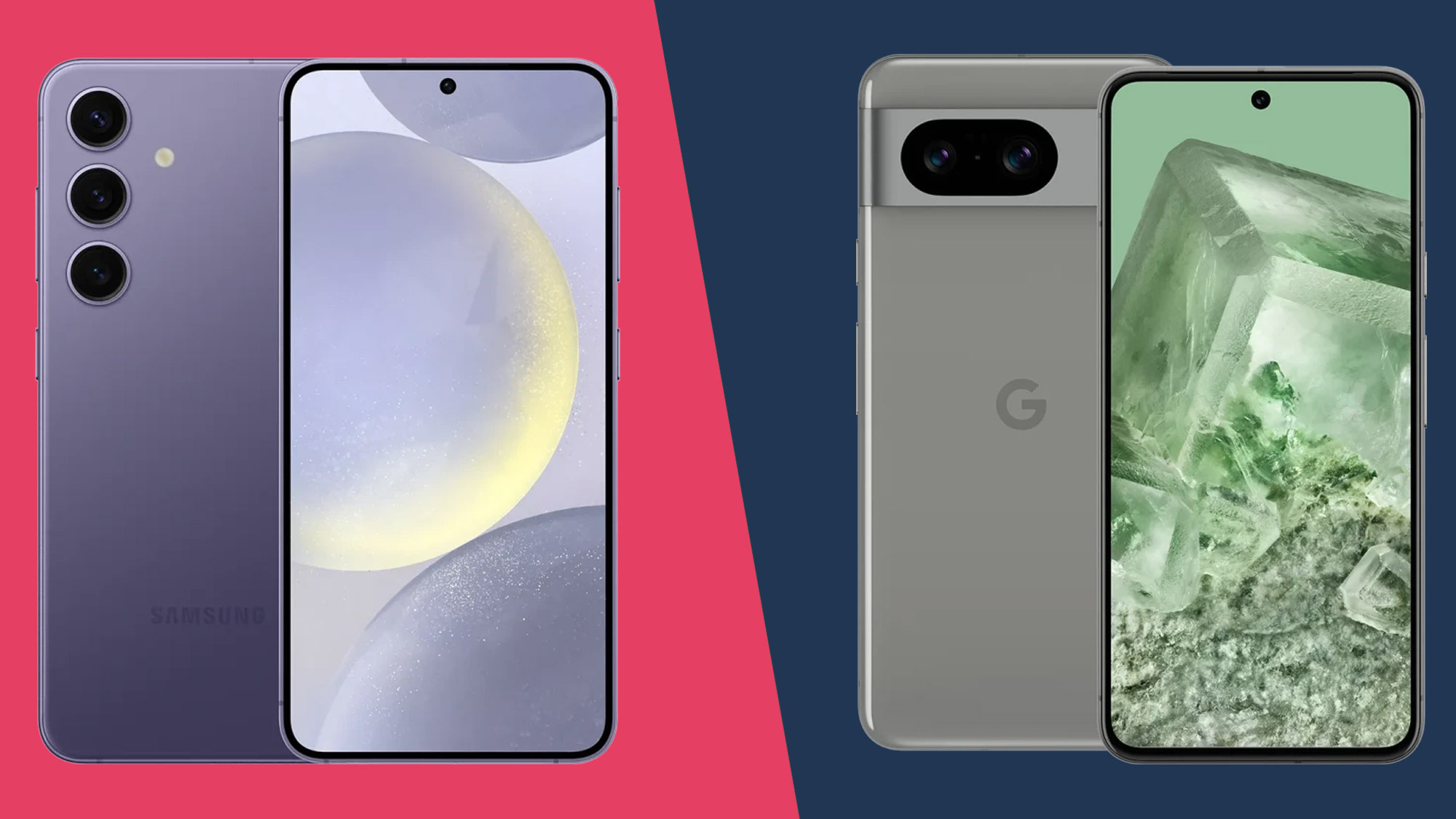
Based on the specs and features of these phones along with our full reviews, there's more in common between the Samsung Galaxy S24 and the Pixel 8 than any previous generation of Galaxy and Pixel.
While Google has moved the Pixel 8's design in the opposing direction to the S24, and raw performance still lies with the Galaxy, AI is the big unifier here, as this is a major part of the experience on both phones.
Both phones have similar screens too, though the Samsung Galaxy S24 benefits from an extra camera. On paper, Samsung's phone arguably has the edge, but it also costs more.
You might also like
- Samsung Galaxy S24 review: familiar S-series traits, new AI tricks
- Hands-on Samsung Galaxy S24 Plus review: the Plus has found its purpose
- Samsung Galaxy S24 Ultra review: what Galaxy learned from Pixel

Alex joined as TechRadar's Senior Phones Editor in June 2022, but brings over a decade's worth of experience to the role, with an expertise in smartphones, tablets and wearables. He's covered keynotes hosted by the biggest brands and attended the launches for some of the most influential mobile products of the last few years. His experience was amassed at some of the most reputable consumer technology publications out there, including GSMArena, TechAdvisor and Trusted Reviews.